Is Ronda, Spain Worth Visiting? (29+ Best Things to Do)
Disclaimer: Links on this page may be affiliate links. If you make a purchase after clicking a link, I may receive a small compensation to help power my site at no cost to you.
Wondering if Ronda is worth visiting? 100% Yes!
Ronda may not be as well known as Seville or Málaga. Yet, the small, romantic Andalusian city deserves a place on everyone’s bucket list if you ask me!
Having lived in Spain and traveled all over the country, I was blown away when I arrived in Ronda on a Southern Spain road trip.
During my time in Ronda, I learned that the charm of an Andalusian white village and dramatic cliff-edge views are just the tip of what the city has to offer.
Read along to find out why Ronda is worth seeing, the best things to do in Ronda, where to stay in Ronda, how to get to Ronda, and much, much more!
Is Ronda, Spain worth visiting?
In a word, yes! Ronda is worth visiting.
Situated on a mountain plateau is where you’ll find this picturesque, pre-historic city in the province of Málaga, Andalusia. It offers a captivating blend of history and culture amongst stunning landscapes.
After all, the 163,000 international tourists that visit Ronda each year can’t be wrong. Right?
Ronda at A Glance
As for what to see in Ronda, the iconic Puente Nuevo bridge should be your first stop. Connecting the two parts of the city (old and new) over the El Tajo gorge, the bridge provides indescribable views of the nearby countryside and mountains.
The historical old town, known as La Ciudad, is a charming white-washed village with yellow accents. I had such a wonderful time wandering through its cobbled streets.
I stumbled upon old mansions, stone churches, and the old city walls while exploring.
Of course, Ronda is also brimming with cafes, restaurants, and shops. The newer part of town, “hanging” atop the steep cliff, offers scenic promenades with many different lookout points.
Ronda is renowned as the birthplace of bullfighting and has one of the most attractive bullrings in Spain.
One of the interesting facts about Ronda is that it attracted artists and writers including Orson Welles, Alexander Dumas, and Ernest Hemingway. Evidence of their deep connection to the city is all around, too, not only in their writing.
Beyond its cultural and historical significance, Ronda entices visitors with traditional crafts, delectable cuisine, wine, and its proximity to several natural parks.
Whether you have one day or a few days to spare, Ronda is easily accessible from Málaga, Seville, or Granada, making it an ideal destination for a short trip.
Without a doubt, seeing Ronda is worth it. We’d go so far as to say it will be a highlight of your trip to southern Spain!
28 Best Things to Do in Ronda, Spain
With phenomenal views, interesting historical sites, great restaurants, and opportunities for outdoor enthusiasts, Ronda is easily a must-visit destination in southern Spain.
Here are the best Ronda, Spain things to do:
1. New Bridge (Puente Nuevo)
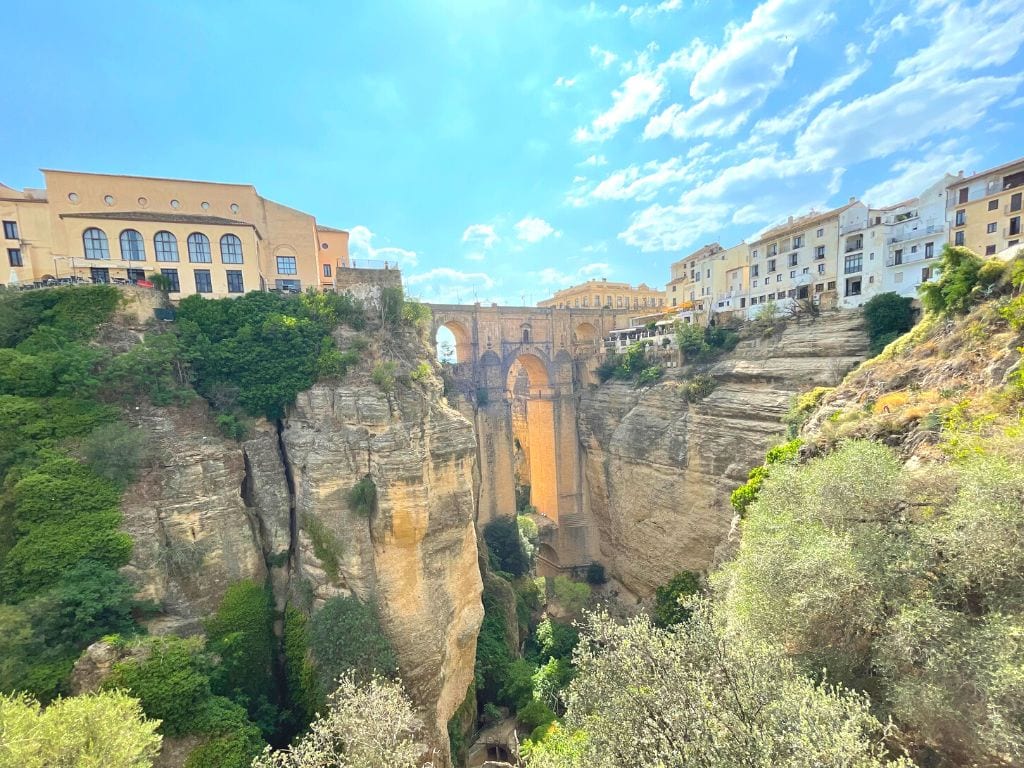
The Puente Nuevo (New Bridge) is Ronda’s most iconic landmark. Completed in 1793, it connects the Old Town (La Ciudad) with the newer part of town (El Mercadillo).
Plunging 300 feet (92 meters) down to the Guadalevín River, the Ronda bridge offers breathtaking views of the El Tajo gorge, “hanging” white houses, and endless rolling hills dotted with orange trees and olive groves.
While the Puente Nuevo is a must-see attraction today, the bridge has a tragic history. Fifty lives were lost during its construction. What’s more, the bridge’s interior was once used as a prison and, allegedly, a torture chamber during the Spanish Civil War!
It’s even said that Hemingway found inspiration from stories of Nationalists being thrown off the bridge. You can learn more at the Centro de Interpretación del Puente Nuevo, accessed by a set of stairs at the entrance to the bridge in the Plaza de España.
You can easily walk across the New Bridge (watch for car traffic). But, some of the best views are of Ronda’s epic bridge itself. Don’t worry, there are plenty of viewpoints around the city to take pictures of it!
2. Plaza de Toros de Ronda
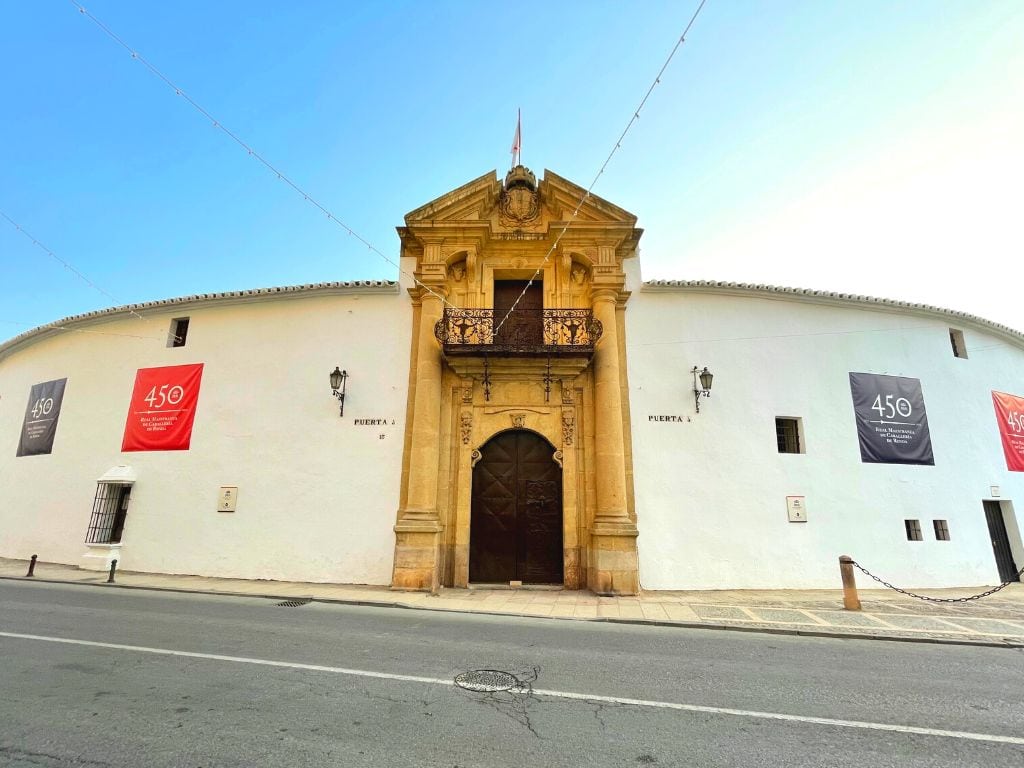
The Plaza de Toros de Ronda (the Ronda Bull Ring), inaugurated in 1785, is the second oldest in Spain after Sevilla. Inarguably, it’s also one of the most beautiful bullrings in all of Spain.
Featuring Tuscan columns and two-story arched galleries fit for 5,000 spectators, the ring was designed by José Martín de Aldehuela. (He also designed the Puente Nuevo!)
Although bullfighting may evoke mixed emotions in modern times, the Plaza de Toros is an undeniable testament to Ronda’s rich bullfighting legacy and is one of the top places to see in Ronda.
For a deeper visit, enter the Bullring of the Royal Cavalry of Ronda’s museum. Learn about the city’s bullfighting tradition and the legendary Romero and Ordóñez families who once graced the ring. Plus, you’ll find interesting displays of matador costumes, gilded harnesses, and exquisite saddles.
Today, the Plaza de Toros primarily hosts concerts and events. Only a single bullfight is held during the Feria de Pedro Romero festival each September.
3. Alameda del Tajo
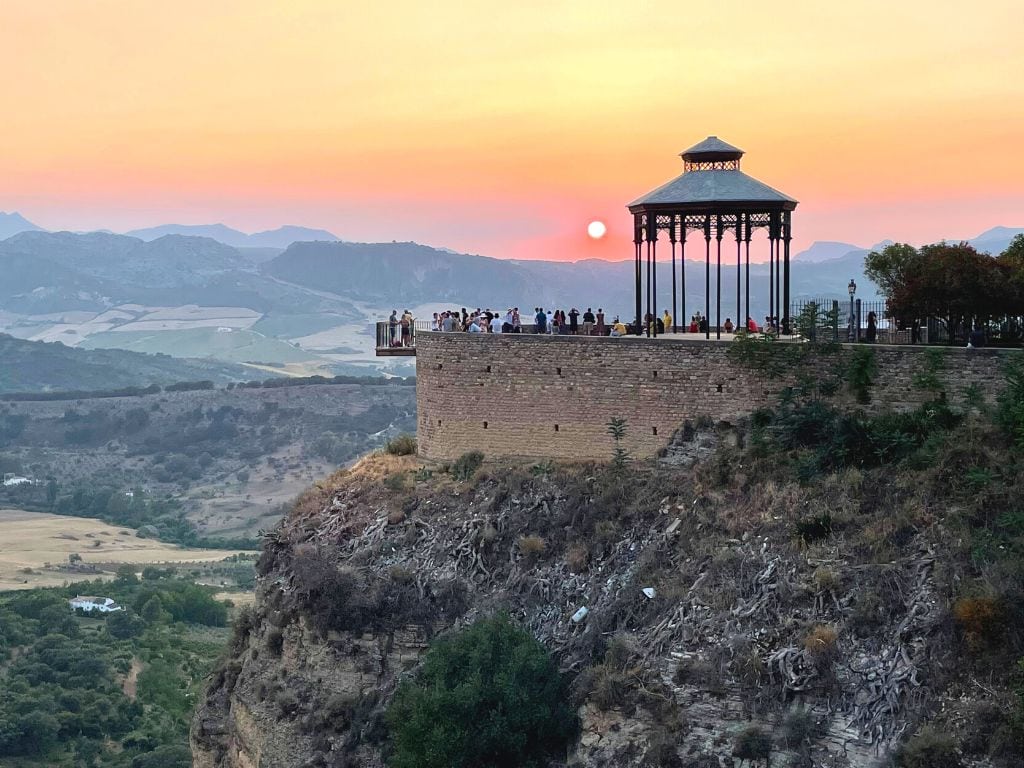
Just beyond the Plaza de Toros in the New Town is a leafy 19th-century park, the Alameda del Tajo. Start exploring by wandering behind the bullring along the Paseo de Blas Infante.
Here, you’ll find a lovely garden and walkway with panoramic vistas of the surrounding landscapes.
If you continue walking just a bit towards the larger observation deck known as the Paseo de los Ingleses, you’ll find several balcony viewpoints perched at the gorge’s edge. Known as “Balcones Coños” in Spanish slang, the views will supposedly make a Spaniard exclaim, “¡Coño!” (Although I don’t encourage naughty words, you need to experience the vistas for yourself to fully understand why they say this!)
To end your day in Ronda, head to the Mirador de Ronda. From here, you can check out the mesmerizing sunset over the bridge and the town above.
Truly, witnessing the sunset at the Mirador de Ronda and savoring the panoramic views from the Alameda del Tajo gardens among Ronda’s best things to do!
4. The Old Town of Ronda, Spain
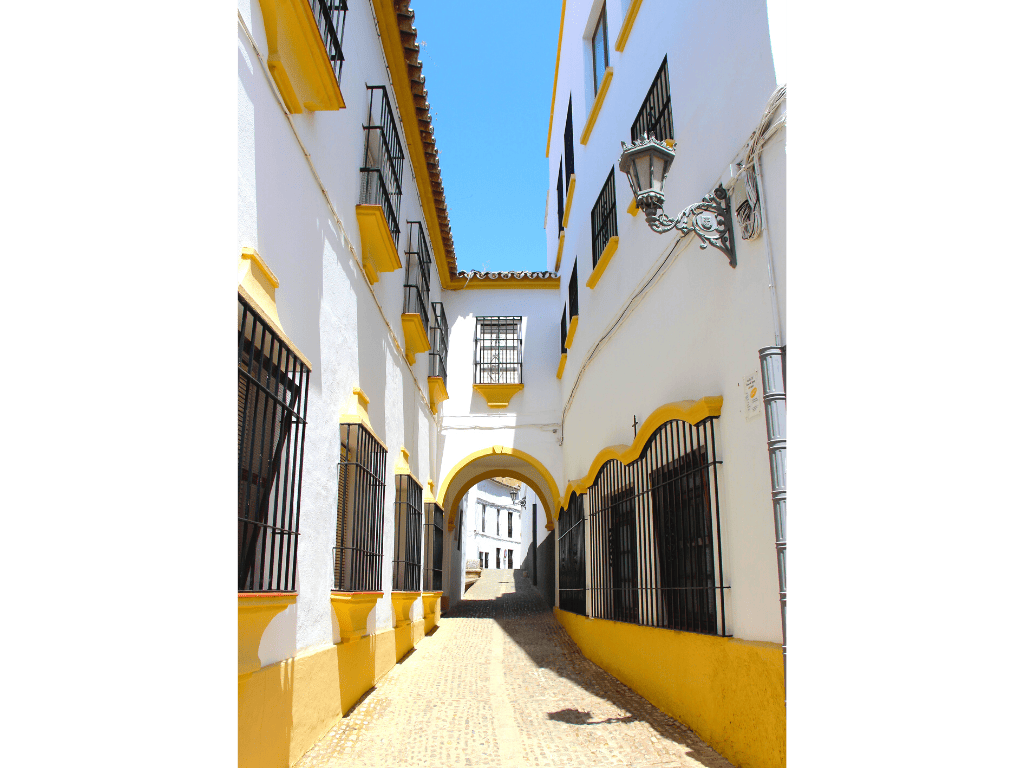
After you’ve crossed the Puente Nuevo, take a few hours to explore La Ciudad (Ronda’s Old Town). It’s a labyrinth of white walls with yellow trim and narrow pedestrian streets that will transport you back in time.
Ronda’s Old Town is a hub of cultural and historical attractions. Don’t miss landmarks like the Church of Santa María la Mayor and the Palacio de Mondragón and several of the city’s most popular museums.
Tucked away throughout the town of Moorish origin, you’ll also discover a handful of delightful coffee shops and restaurants where we recommend you stop to relax and people-watch.
The Plaza de María Auxiliadora has several such establishments, along with an incredible cliffside view. If you’re lucky, there will be musicians playing traditional Andalusian guitar melodies, adding to the serene atmosphere.
5. Iglesia de Santa María de la Encarnación la Mayor
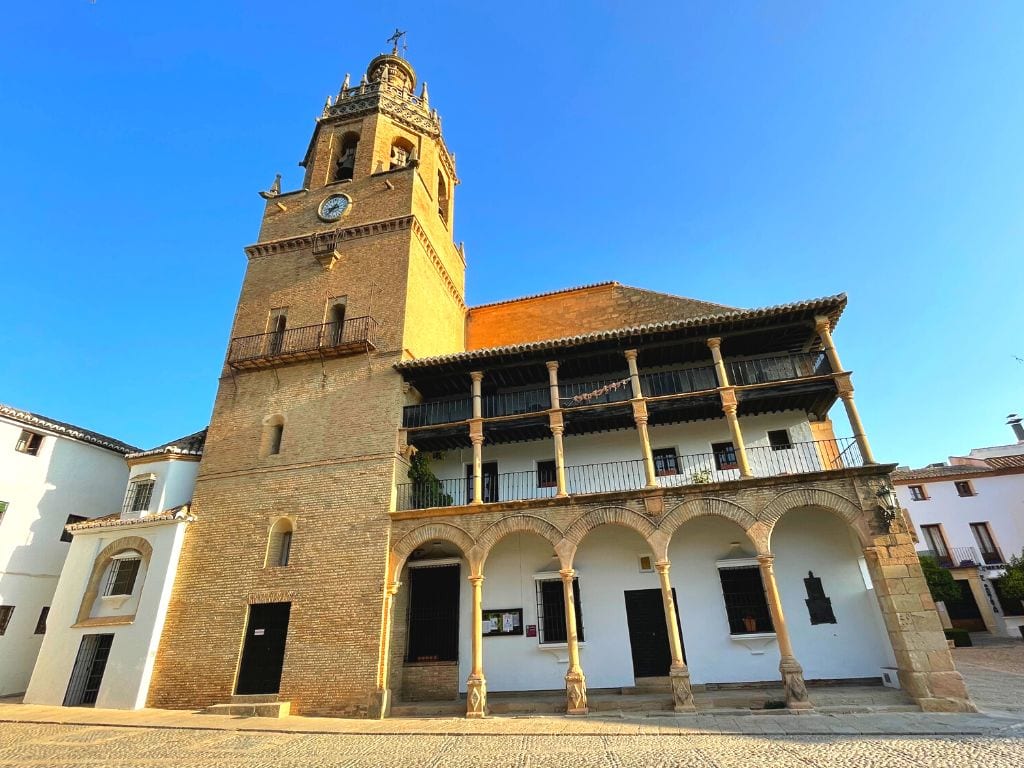
The Iglesia de Santa María de la Encarnación la Mayor, locally known as the Iglesia of Santa María la Mayor, stands proudly in Plaza Duquesa de Parcent in the old town.
With a complex history, Ronda’s biggest and most attractive church was built on the site of a former mosque.
Having undergone renovations following a devastating earthquake in 1580, the historic church showcases exquisite architectural details and artwork with Renaissance, Gothic, and Baroque influences. Watch for the Moorish domes, too!
The church also houses the pasos, wooden statues used in Ronda’s annual Semana Santa processions.
Thu church is typically open Monday and & Wednesday-Saturday from 10:30 am to 2 pm. It’s €4.50 to enter and includes an audio guide.
6. Plaza Duquesa de Parcent
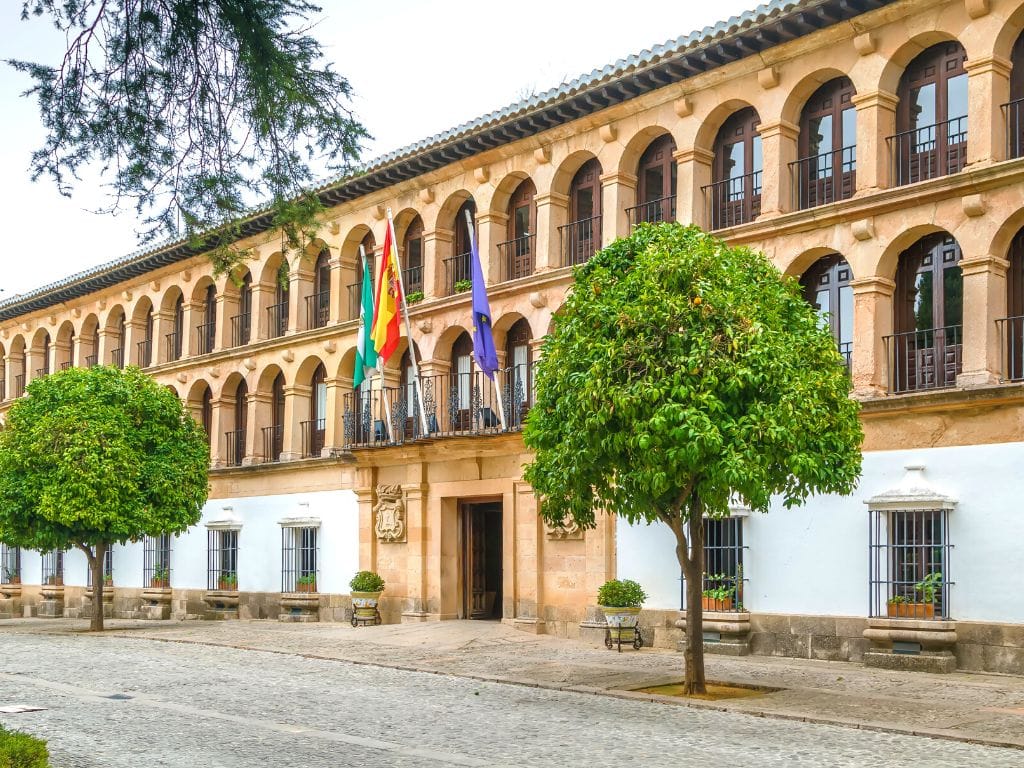
Plaza Duquesa de Parcent is the perfect place to visit in Ronda to unwind and enjoy a coffee or a meal amidst your day of sightseeing.
This spacious square, located in La Ciudad, is the main gathering space in the city. It’s home to several significant buildings, including Ronda’s Town Hall (Ayuntamiento), the Convento De Clarisas De Santa Isabel De Los Angeles, the Convento de Clarisas de Santa Isabel de los Ángeles (where you can buy typical Rondan sweets), and El Castillo, a school within the citadel.
The plaza is adorned with a magnificent church, the Church of Santa Marîa la Mayor, while its gardens feature cypress, palm, and laurel trees, along with the beautiful water fountain, Fuente de agua (Duquesa de Parcent).
Once you’ve found an eatery to your liking, stay until the hour changes so you can hear the church bells sound.
7. The Mondragon Palace (Palacio de Mondragón)
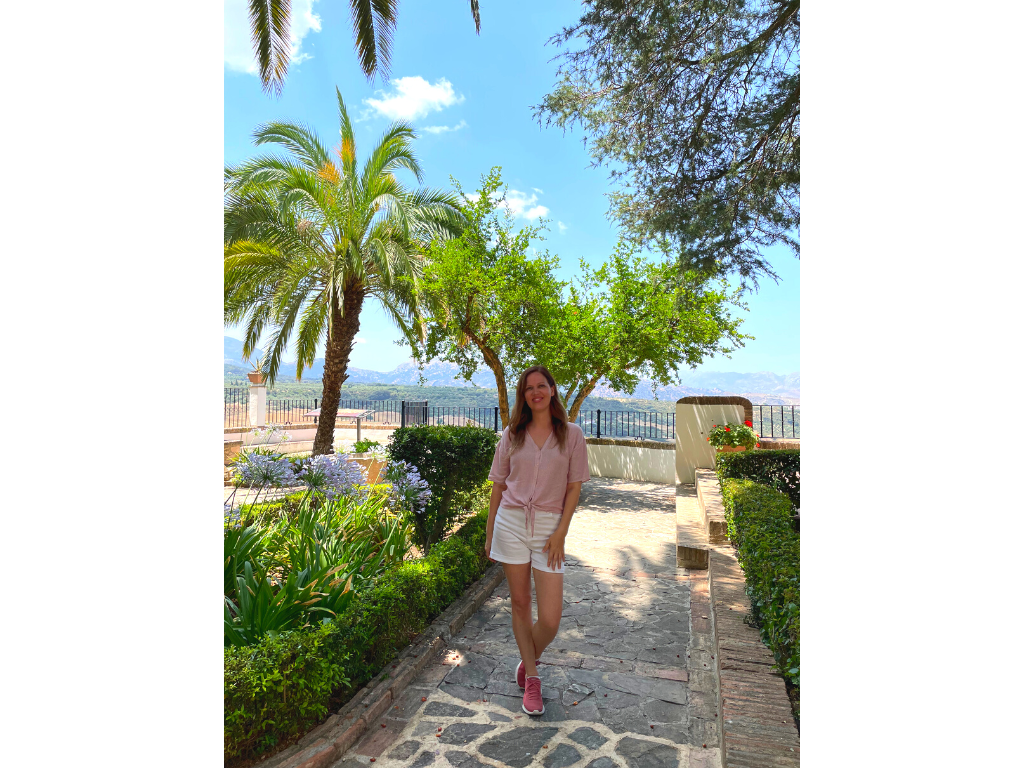
Among the top things to do in Ronda in Ronda are to explore the city’s architectural splendor at the Palacio de Mondragón.
Dating back to the 14th century, this medieval palace served as the residence of Moorish kings and later became the home of the Catholic monarchs Ferdinand and Isabella.
Today, the palace houses the Ronda Municipal Museum, offering a journey through the city’s past in the form of archaeological finds from prehistoric to Roman times, including statues, coins, and more.
Marvel at the blend of Mudejar and Renaissance architecture (including the ceilings!) as you wander through the palace’s three exquisite interior courtyards.
Outside, spend some time in the beautiful Moorish water garden reminiscent of Granada’s Generalife with yet more amazing views of the countryside.
8. Plaque of the Romantic Travelers
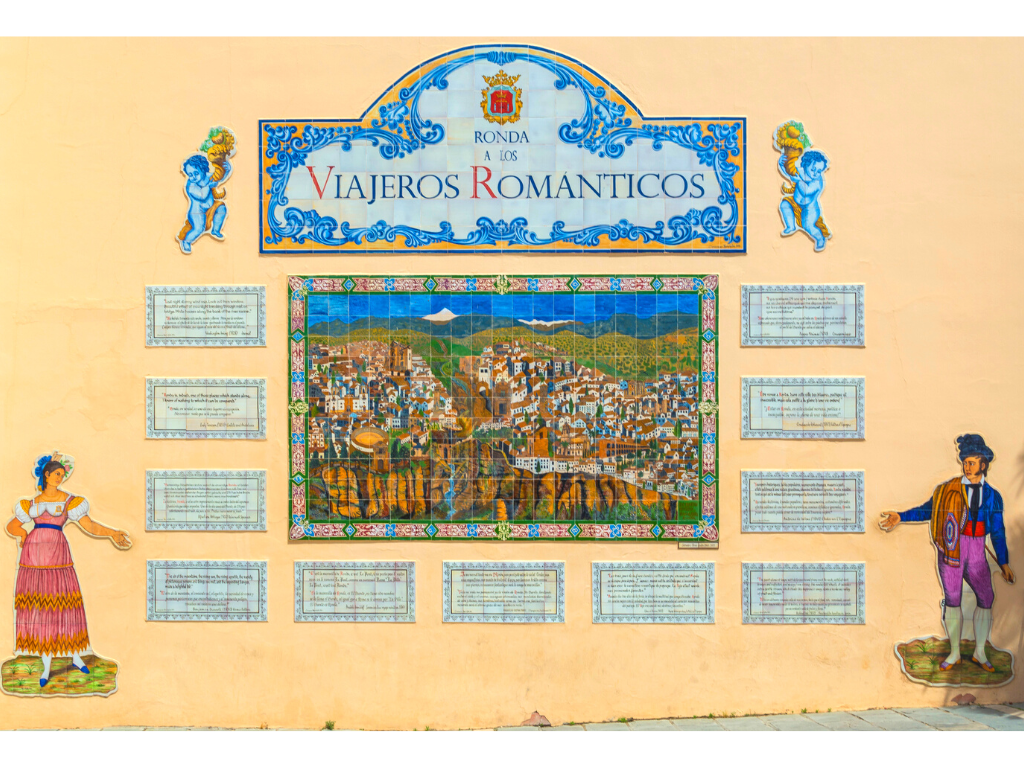
Located near the entrance to the old town, just past the New Bridge, the Plaque of the Romantic Travelers is a sweet tribute to all who have fallen in love with Ronda.
The ceramic-tiled map features the city’s major tourist attractions, complete with two lovers on either side. Small plaques round out the display with phrases of famous travelers who were enchanted by Ronda.
Among them, Washington Irving (writer of Sleepy Hollow) writes, “There has been a storm tonight, wind and rain. I look out the window: the effect of the moonlight breaking the fog on the bridge is beautiful. White houses hang, which follow the course of the river at the bottom of the abyss.”
Take a moment to pause at this heartfelt mural, read the poetic musings, and ponder Ronda’s romantic past before capturing a photo.
9. Museo Lara
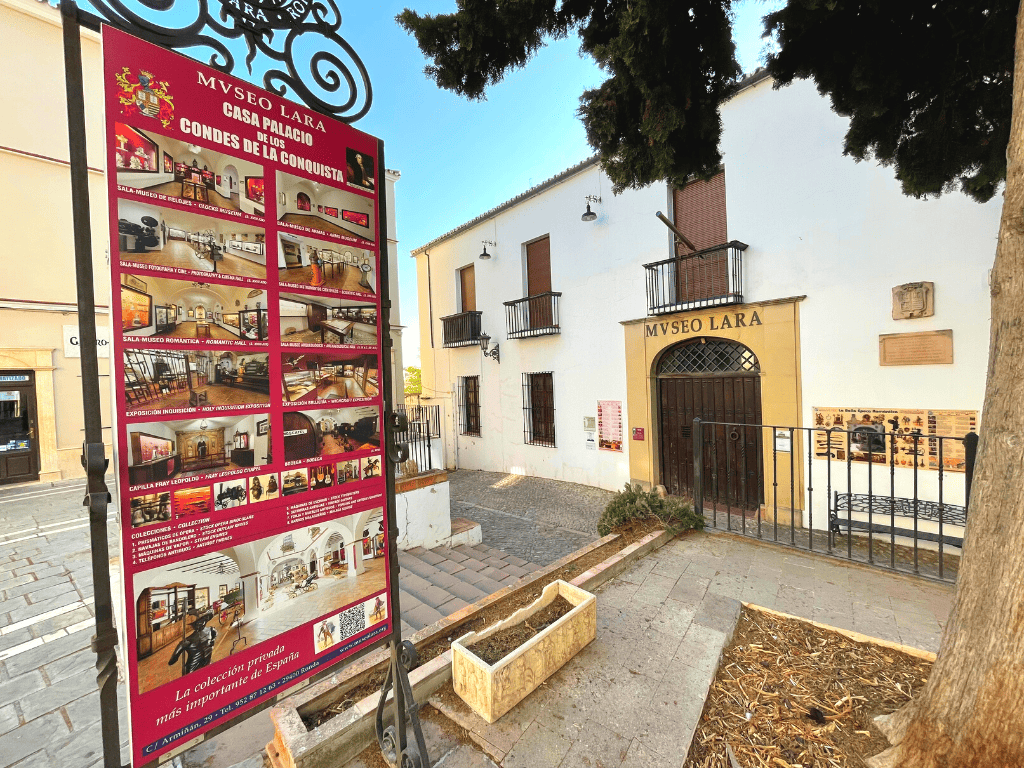
In the historic Palace of the Count of the Conquest of the Batanes Islands, the Museo Lara offers a unique experience for a mere €4 entry fee.
This private museum, founded by Juan Antonio Lara Jurado, features intriguing exhibits on the Spanish Inquisition and witchcraft.
From cameras and jewels to typewriters and electric goods, the museum’s eclectic range of artifacts and antiques will leave you amazed.
Families, in particular, have raved about the museum and the ability to explore the different rooms, take photos, and delve into the intriguing history of the displays.
Please note that the museum accepts cash only. Multilingual audioguides are available.
If you’re looking for unique things to do in Ronda, visit the Museo Lara!
10. Casa Museo Don Blasco

The Casa Museo Don Blasco is a magnificent modernist-style mansion with a gorgeous garden offering exciting views of El Tajo gorge.
Originally built in the mid-19th century, the mansion underwent a modernist transformation in the early 20th century and was mainly used as a sanatorium until 2008. Inside, discover a time capsule showcasing local craftsmanship through tapestries, ceramic tiles, and hand-carved wooden furniture.
After your museum visit, make your way to the enchanting garden terrace and bar. Unwind with a refreshing wine from Ronda, complemented by a selection of regional cheeses, while you gaze upon the striking valley and marvel at the architectural grandeur of the bridge at Ronda.
Entry to Casa Museo Don Blasco is 2.5€.
11. Puerta de Almocábar (Old City Gates)
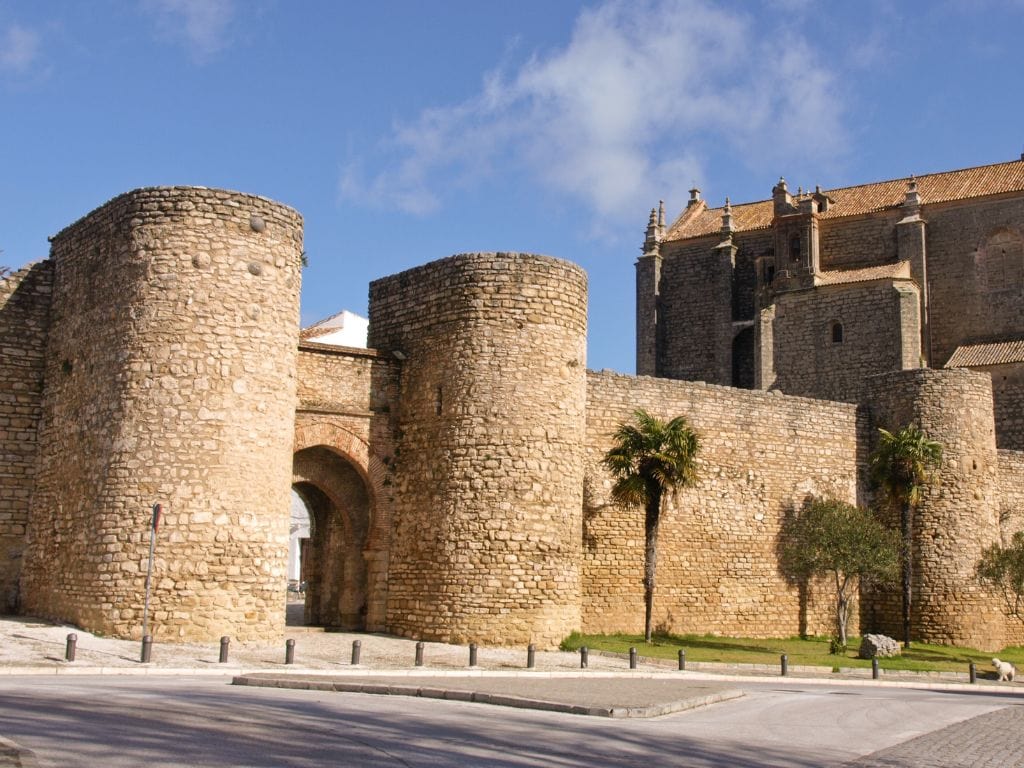
The Puerta de Almocábar once served as the primary entrance to Ronda’s old town and played a vital role in the city’s defense. These monumental gates, built by the Arabs in the 13th century and modified during the time of Carlos I de España, consist of three gates and two semicircular towers.
Today, visitors can admire the monumental structure and the remains of the old walls that once protected Ronda. Upon crossing the gate, you’ll find the Plaza de San Francisco with excellent dining options, including Casa María and Restaurante Almocábar.
Interestingly, the Puerta de Almocábar derives from the Moorish word meaning “cemetery,” reflecting the tradition of building cemeteries outside the town walls.
12. Iglesia del Espíritu Santo (Church of the Holy Spirit)
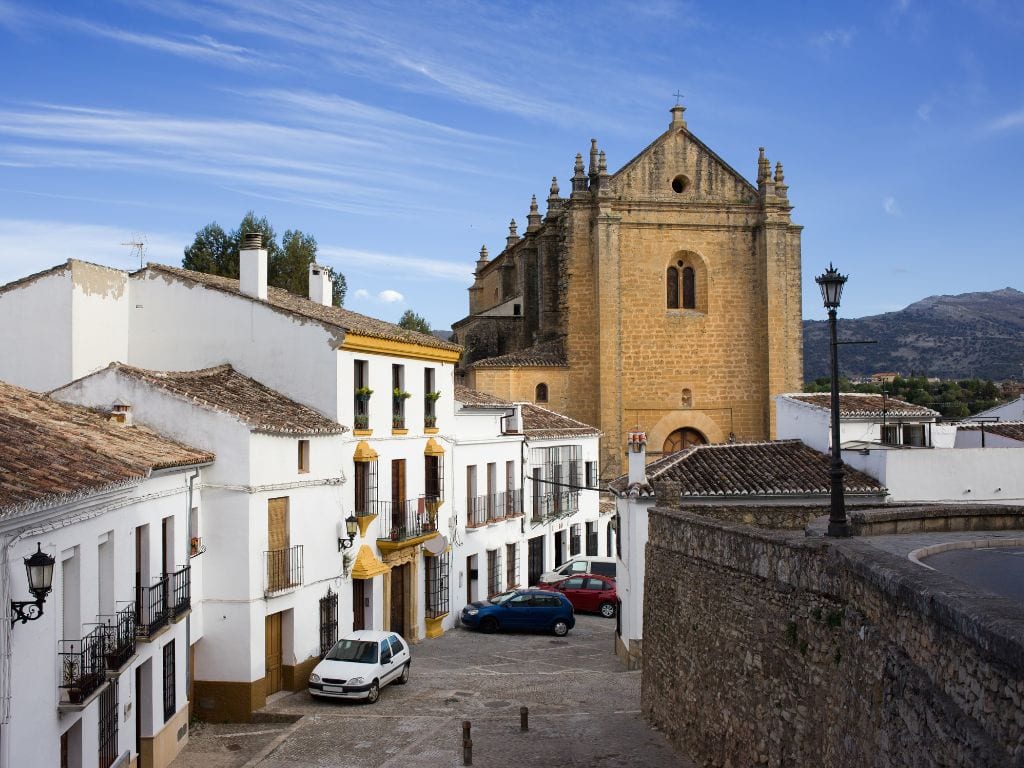
Built within the town’s fortifications, the Iglesia del Espíritu Santo church bears a distinctly defensive look. However, on its facade, you’ll find an image of the Holy Spirit in the form of a delicate dove.
Construction began in 1485, the same year Ronda was reclaimed by the Catholic Monarchs, on the remains of a Moorish octagonal tower.
Unlike many churches of its scale, the Church of the Holy Spirit in Ronda exhibits a sense of design homogeneity due to its relatively short construction period (20 years).
Fittingly, it overlooks the city gate, Puerta de Almocábar, emphasizing its significance in Ronda’s history and prominent place in Ronda’s architectural heritage.
13. Plaza de España
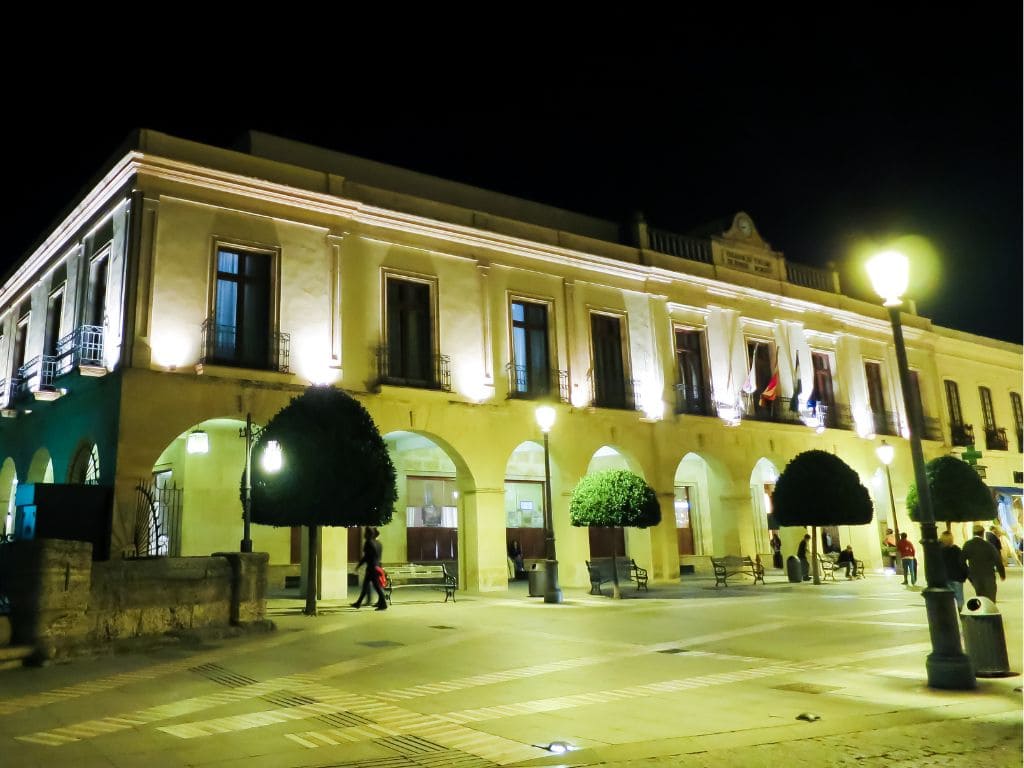
Just before you cross the iconic Puente Nuevo into the enchanting Old Town, you’ll be greeted by the bustling Plaza de España.
This simple square is one of Ronda’s most visited spots. Unfortunately, the Plaza de España holds some grim historical significance, which was immortalized in Ernest Hemingway’s “For Whom the Bell Tolls.”
The plaza has been recently renovated, revitalizing some of its historical buildings. The splendid Parador de Ronda is held in a former Town Hall dating back to 1843. Stay there, if you dare! (Check rates & availability.)
Alive with cars and tourists crossing the bridge, the lively square offers a few small trees and inviting terraces. And yes, even a McDonald’s can be found here, particularly busy during breakfast.
Don’t forget to check out the bust of Don Antonio de los Rios Rosas, an esteemed statesman, in the roundabout as you pass through.
14. Iglesia de Ntra. Sra. de la Paz
The Our Lady of Peace Church is a unique cathedral hidden in Ronda’s old quarter. Despite its small size, it is a must-see attraction worth exploring!
Outside, you’ll instantly feel intrigued as you find the colorful church on a small, unassuming square.
The sanctuary, dating back to the 16th century, features a dramatic altarpiece blending Mudejar and baroque styles. It’s adorned with intricate carvings including the renowned El Cristo de la Sangre by Duque Cornejo (the most important religious carving in the city).
Last, but certainly not least, the church contains a spectacular image of the Virgin of Peace, Ronda’s patron saint.
Every corner of this small church is filled with fascinating details. Don’t skip it!
15. La Casa Del Rey Moro
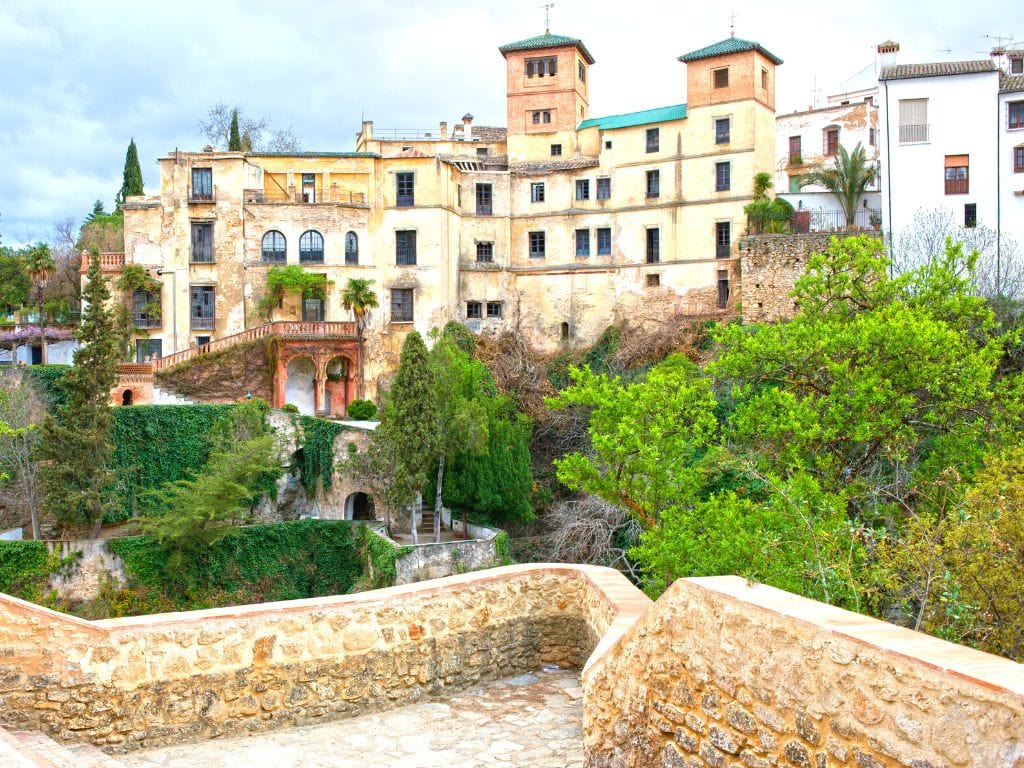
La Casa del Rey Moro in Ronda, Spain was never home to any kings! Instead, it’s renowned for its water mine, floating gardens, and intriguing house.
The water mine, constructed in the 14th century, consists of a system of stairways that spiral down 231 steps to the Guadalevín River. This mine actually served as the city’s primary water source for centuries!
The dazzling terraced gardens, designed by Jean-Claude Forestier in 1912, feature fountains, streams, and pools adorned with colorful flowers and ceramic tiles.
While the mansion itself is not open to the public, exploring the gardens and descending into the water mine provides a unique look at Ronda along with thrilling views of the gorge, the river, and the surrounding mountains.
16. Jardines De Cuenca

Jardines de Cuenca (Cuenca Gardens) are terraced gardens located in the new town of Ronda.
They were created in 1975 to commemorate the twinning of Ronda with its sister city, Cuenca (known as a hanging city, as well).
The 23 rose-covered terraces offer a peaceful escape from the crowds and an excellent vantage point to appreciate Ronda’s remarkable landscapes and architectural marvels, including the Puente Nuevo, Puente Viejo, Roman Bridge, the gorge, and the Guadalevín River,
17. The Arab Baths of Ronda
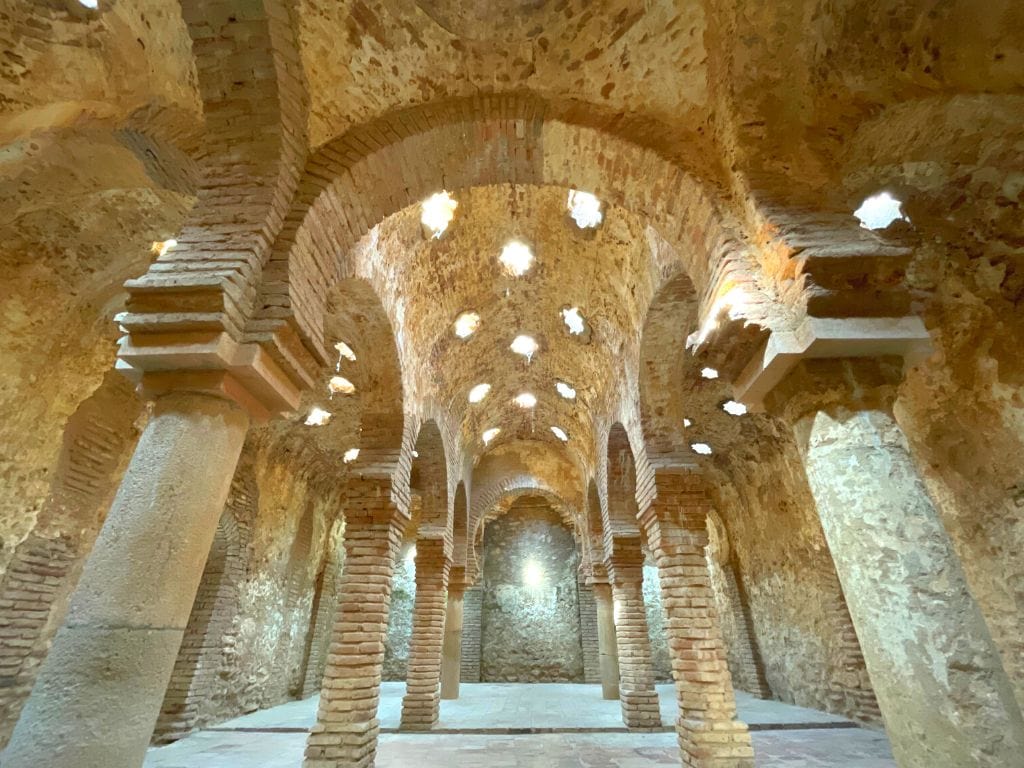
Discover the best-preserved Moorish Baths in Spain! Dating back to the 13th to 15th centuries, Ronda’s thermal baths maintain the legacy of Spain’s Moorish rule.
The baths served both sanitary and religious purposes and featured separate chambers for cold, warm, and hot baths.
It goes without saying the pièce de ré·sis·tance is the arched ceiling with star-shaped roof openings. These openings once allowed steam and light to flow through.
The Baños Árabes are open from Monday to Friday and limited hours on Sundays. General admission is 4.5€. A video presentation in English and Spanish plays on a loop.
Since the baths are located downhill, it’s quite a climb down to them (and back up again), but it’s worth it!
18. Puente Viejo and Puente Romano
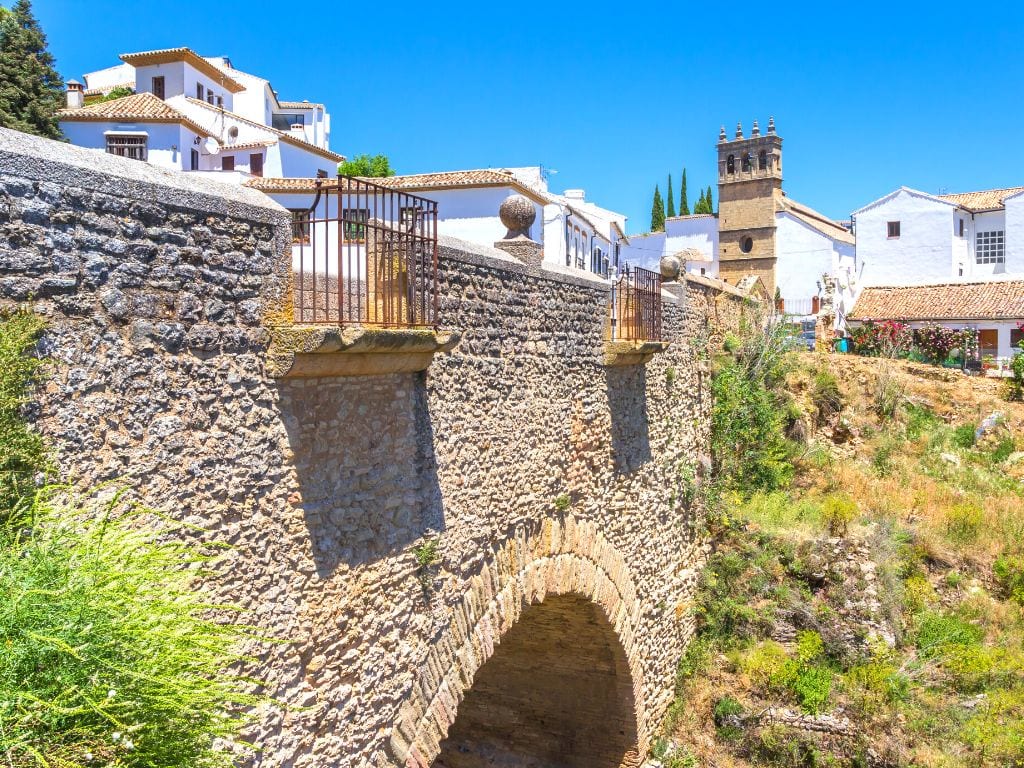
Ronda is not only connected by the iconic Puente Nuevo, but also by two other bridges, the Puente Romano (Roman Bridge) and the Puente Viejo (Old Bridge).
Located close to each other, the lower bridges offer a unique perspective of the gorge.
The Puente Viejo believed to be from the 16th century has been restored over time.
Meanwhile, the Puente Romano, despite its name, is actually an Arab bridge from Ronda’s Moorish period.
Though not as famous as the Puente Nuevo, these Ronda bridges are interesting structures and provide access to interesting sites like the Arab Baths and the Hermitage of San Miguel (also called La Ermita de la Virgen de la Cabeza).
19. Puente Nuevo Viewpoint (El Tajo Gorge)
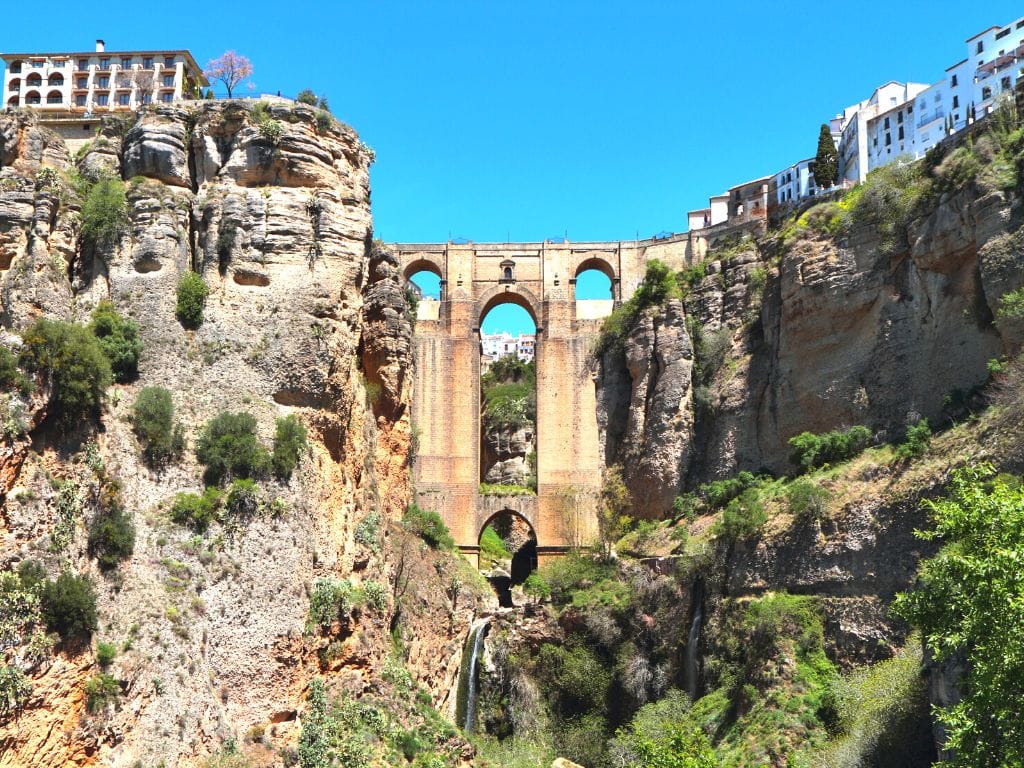
To truly grasp the grandeur of the Puente Nuevo, plan to hike down into the El Tajo Gorge.
Begin your descent at the Plaza de Maria Auxiliadora. You’ll find an unpaved road that leads you gradually into the gorge near the edge of the square.
While parts of the path can be steep and rocky, the effort is worth it for the heart-stopping viewpoints. They each show different perspectives of the Puente Nuevo and the cascading waterfall beneath it.
You also can’t help but marvel at the towering height of the bridge, reaching an impressive 328 feet (100 meters). Just imagine the immense undertaking it must have been to construct such a structure in the 1700s!
20. Walls of Ronda
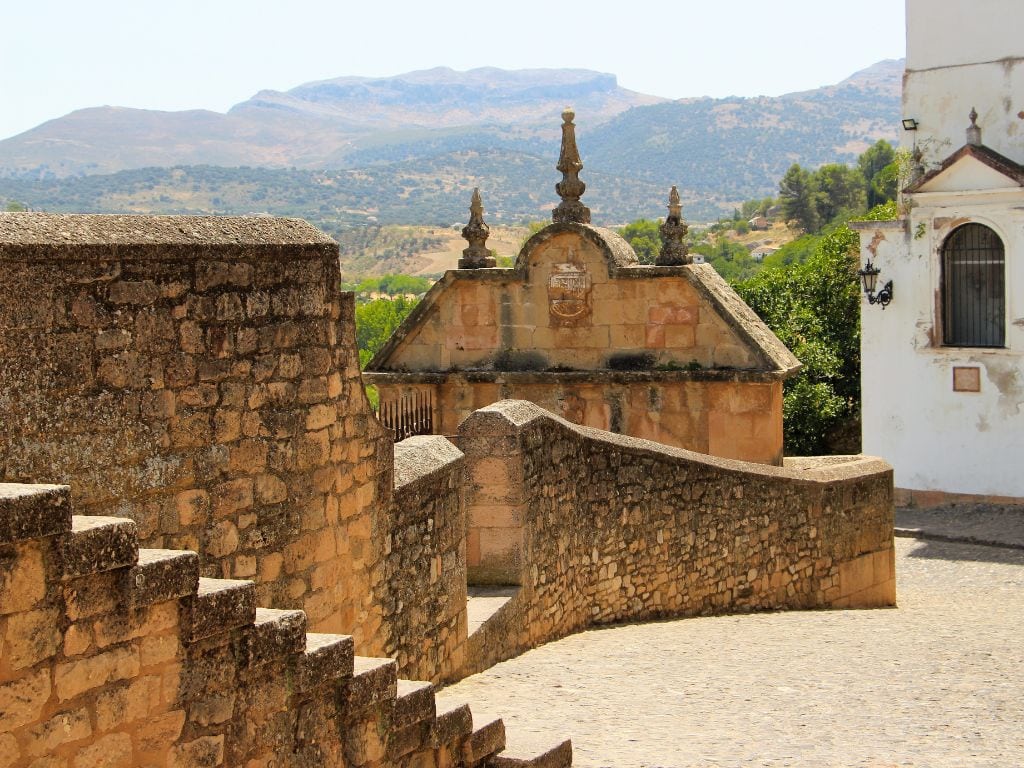
The formidable Walls of Ronda, together with the terrain, served as a crucial defense system and rendered Ronda nearly impregnable. Thus, it became one of the most important cities of the Middle Ages.
Divided into different sections, such as the Murallas de Levante and Murallas del Carmen, each portion served its own purpose in fortifying the city.
The Murallas del Carmen, exceptionally well-preserved, stand as a testament to the aforementioned medieval defenses. As you traverse along the walls, marvel at their architectural splendor while taking in the dramatic scenery.
Look out for the Arco de Felipe V near the northernmost entrance to the walls and the Puente Viejo. The notable stone arch marks the entry to the La Ciudad district.
21. Minaret of San Sebastian
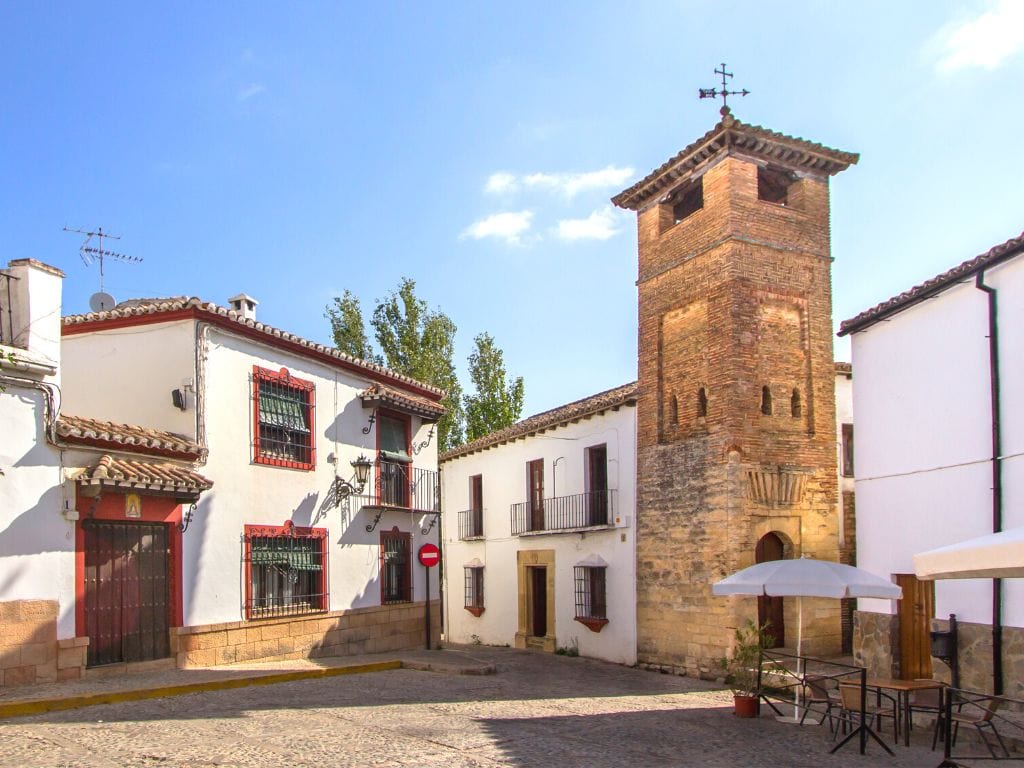
The San Sebastian Minaret, a captivating vestige of Ronda’s Muslim past, is a small tower nestled amidst the white houses of the old town.
Originally part of a mosque, it later transformed into the bell tower of the Church of San Sebastián. Both houses of worship no longer exist.
This architectural gem features a striking entrance arch and three levels. Crafted from stone and brick, the minaret stands as a testament to Islamic architecture and heritage. Now a quiet old relic, the muezzin once called the faithful to prayer from the minaret.
Declared a national monument in 1931, the minaret and the neighboring streets of Ronda’s Moorish Old Town Ronda invite us to pause and reflect on Ronda’s rich heritage.
22. The Bandit Museum
The Museo del Bandolero, or Bandit Museum, is an unusual thing to do in Ronda, yet comes highly rated!
The museum showcases the history of bandits, romantic travelers, smugglers, and the Civil Guard. The collection includes over 1,300 artifacts including weapons, clothing, anecdotes, photographs, and original documents that teach all about the different aspects of banditry!
Plus, peek into the lives of the region’s famous outlaws such as “El Tempranillo” and “Tragabuches.”
The museum also houses a library with over 500 books!
Shedding light on this lesser-known aspect of Andalusian history, the museum provides hours of fun for all ages!
Admission is €3, and the museum is conveniently located near the Plaza Duquesa de Parcent.
23. Convento de Santo Domingo (Palacio de Congresos de Ronda)
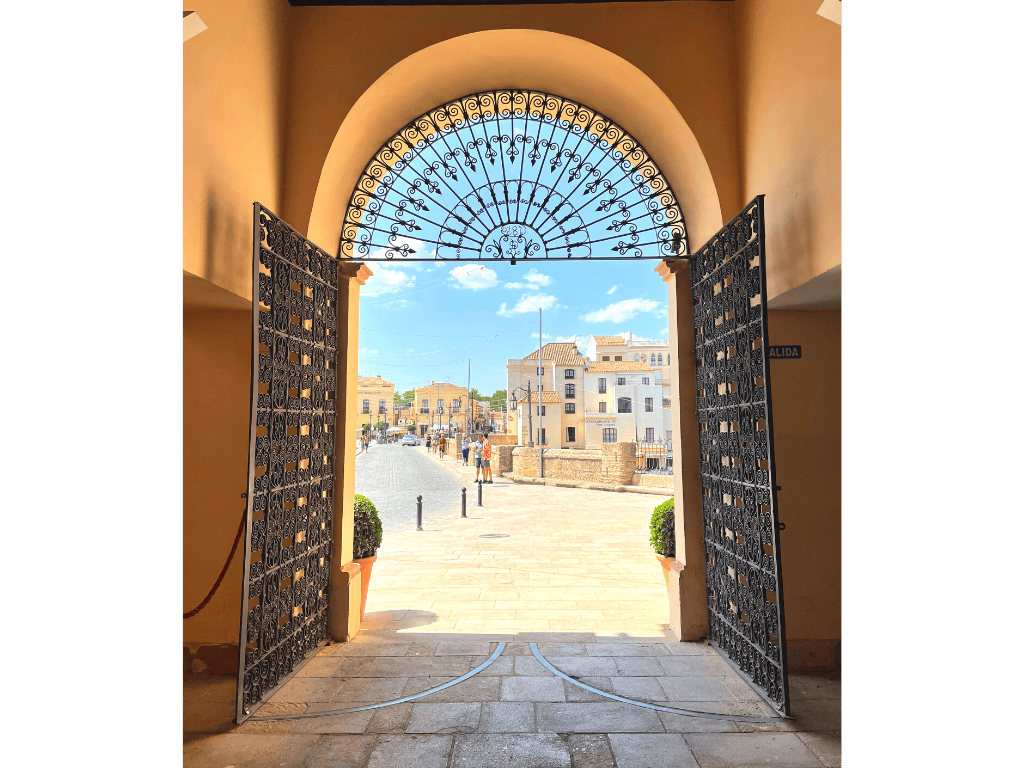
The Convento de Santo Domingo, also known as the Palacio de Congresos de Ronda, once served as the headquarters of the Inquisition Tribunal!
Today, the 16th-century building has been transformed into the Ronda Conference Center. Its rooms are used for events such as conventions, workshops, courses, seminars, and exhibitions.
Inside the convent, you’ll find a large courtyard and a well-preserved Mudejar coffered ceiling. Take a moment to enjoy the architecture and tranquility inside before heading outside to the Mirador de Aldehuela.
The Mirador de Aldehuela lookout point gives a distinct view of the bridge and the El Tajo cornice.
Entry is 1€ or included with the 12€ Ronda city municipal pass. Get one at the tourist info center or at any of the included sites.
24. Monumento al Toro
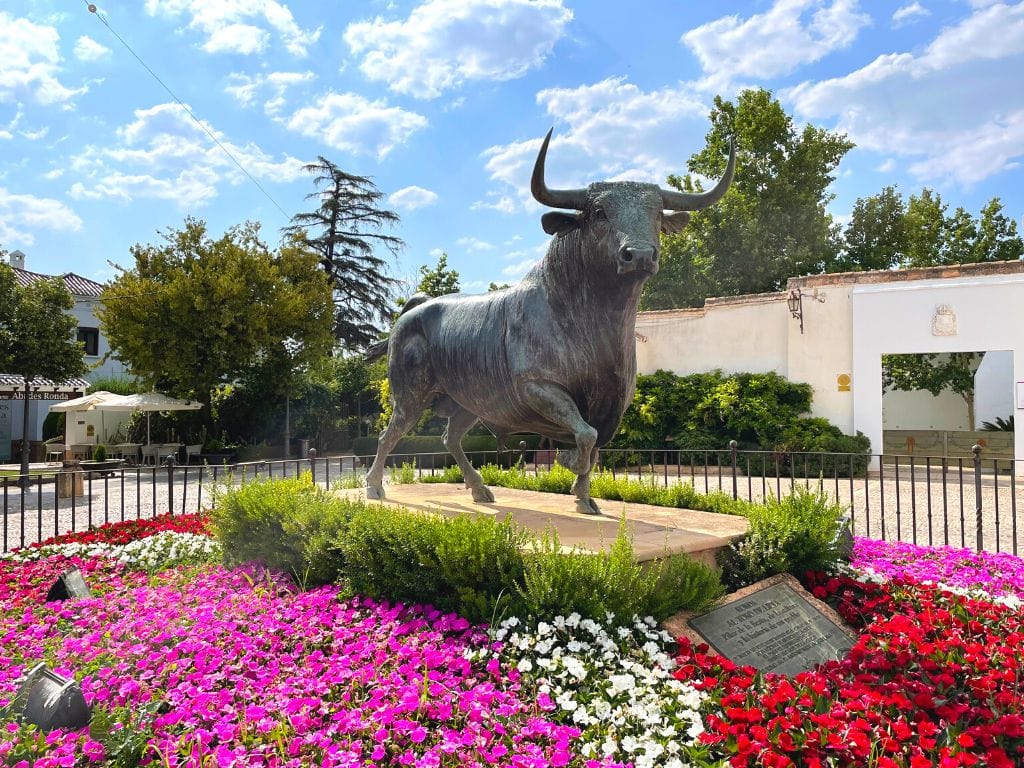
The Monumento al Toro de lidia is located outside the Plaza de Toros de Ronda. Inaugurated in 2005, it pays homage to the Spanish Fighting Bull, symbolizing the festival, culture, and history of Ronda.
The magnificent metal sculpture, surrounded by flowers, captures the power and beauty of the bull, Spain’s national animal.
The true-to-life-size statue is riveting, especially at dusk. A fitting tribute to the majestic beast, it’s not to be missed!
25. Plaza del Socorro
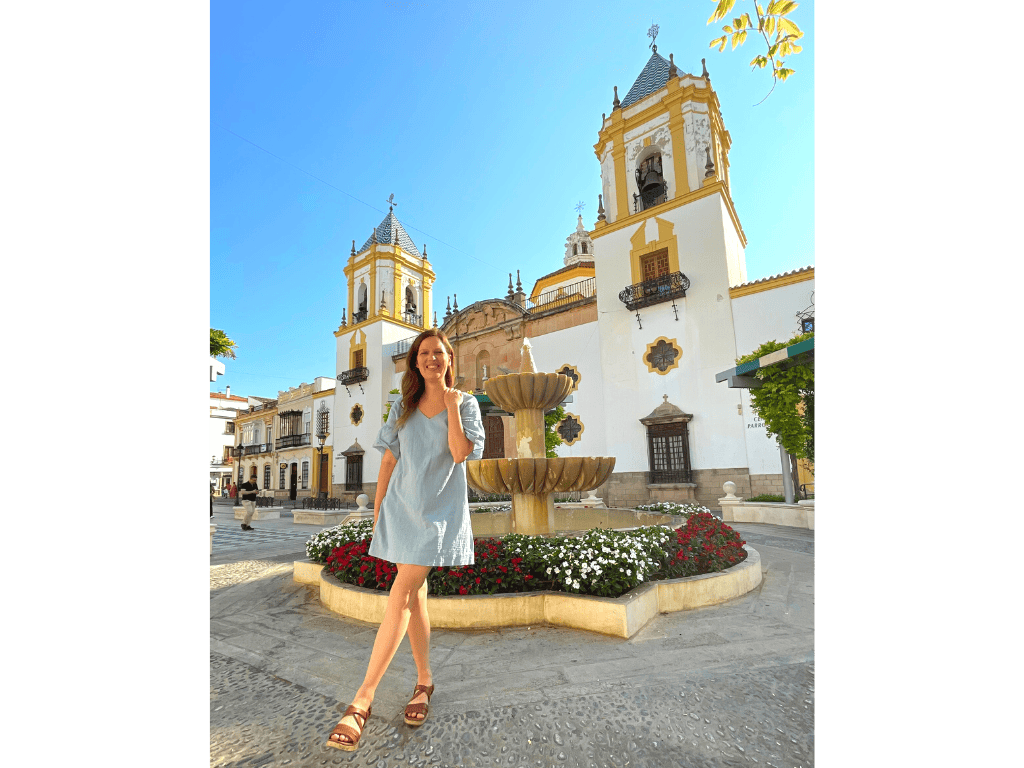
Plaza del Socorro has witnessed centuries of history unfold and continues to be a vibrant hub of activity.
This spirited square in the new town showcases the spirit and cultural identity of Ronda, Andalucía (Andalusia in English). Blas Infante, the “father of Andalusia” unfurled the region’s flag here, marking a pivotal moment in the region’s political awakening (1918).
Today, the plaza is surrounded by restaurants and cafes full of chattering guests—locals and visitors alike.
After you have a bite to eat, take a few moments to walk around the square. At its center, an inviting fountain sits in front of the Parroquia de Nuestra Señora del Socorro.
Nearby, you’ll also see a second fountain of Hercules with two lions by his side symbolizing strength and power.
26. Hiking the Molinos del Tajo Trail

If you have the time, we highly recommend walking the scenic Molinos del Tajo Trail. This is a 3.8-mile (6.1 km) loop near Ronda, Málaga, Spain. A moderately challenging route, you’ll come across the diverse terrain and landscapes that envelop the city.
Immerse yourself in the tranquility of the trail, passing by the Ronda, Spain bridge, rural houses, and wonderous vistas. The path runs through forested areas, over rocks, streams, wooden bridges, and abandoned buildings, giving you lots to explore.
Wear good shoes as the terrain with changes from cobblestone and pavement to country roads, some of them quite steep.
Whether you choose to hike in the morning for a peaceful experience or at different times of the year, the Molinos del Tajo Trail promises a memorable outdoor excursion in Ronda.
27. Shopping on Carrera Espinel

Carrera Espinel is a modern pedestrian street located in the heart of the El Mercadillo (new) area.
Spanning just over a half mile (almost 1 km), Carrera Espinel is lined with a mix of popular European chain stores like Mango, Stradivarius, and Ale-Hop and local boutique shops.
You can also find a variety of cafeterias, bars, ice cream and coffee shops, and restaurants. It’s a terrific spot to people-watch, for certain!
The street’s nickname name, “Calle La Bola,” supposedly comes from a giant snowball that once rolled down its length.
28. Ronda’s Wineries & Ronda Wine Tours
While you’re in the area, embark on a wine journey through Ronda’s vineyards!
Steeped in winemaking tradition dating back to Roman times, there’s a delightful array of award-winning wines in the Serranía de Ronda region.
In fact, with numerous wineries along Ronda’s wine route, it’s a haven for wine aspiring wine enthusiasts and connoisseurs alike.
From learning the secrets of biodynamic farming and natural wines to traipsing around a 16th-century convent-turned-winery, we’re sure you’ll have a lovely time!
Spend a day journeying through dreamy landscapes and exploring vineyards cultivating diverse grape varietals, from robust reds to elegant whites and rosés. And of course, taste a few wines while gaining insights into the meticulous winemaking process.
Book a wine tour from nearby Malaga, savoring a vineyard lunch and experiencing Ronda’s acclaimed wines.
29. The Serranía de Ronda
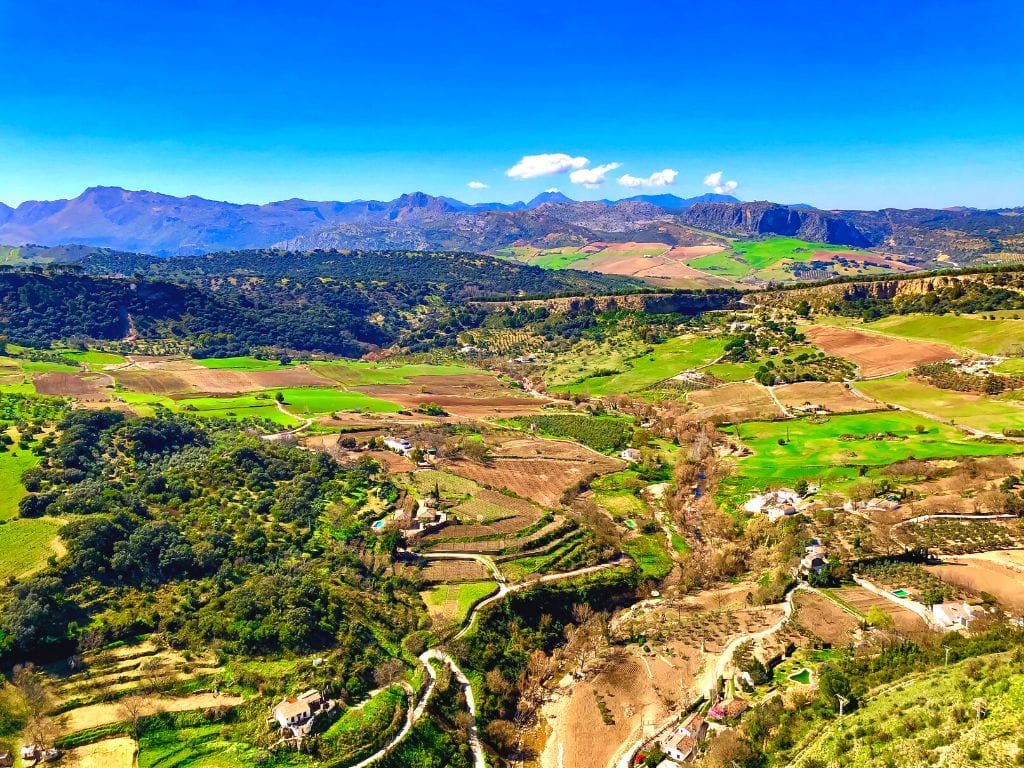
The Serranía de Ronda is the majestic mountain range that envelops Ronda city. Located in the western part of the Province of Malaga, it’s a refuge for outdoor enthusiasts with its mesmerizing landscapes and abundant cycling and hiking opportunities.
We recommend renting a car and driving to explore the region’s valleys, rivers, and charming white towns perched on the mountainsides. Parauta, Cartajima, and Júzcar are all worth visiting.
If you crave more adventure, the remote and protected mountain ranges of Sierra de Grazalema (west) and Sierra de las Nieves (east) are just a stone’s throw away.
Get in touch with Ronda’s tourist office (located across from the bullring) for detailed information on Ronda hiking trails.
How to Get to Ronda, Spain
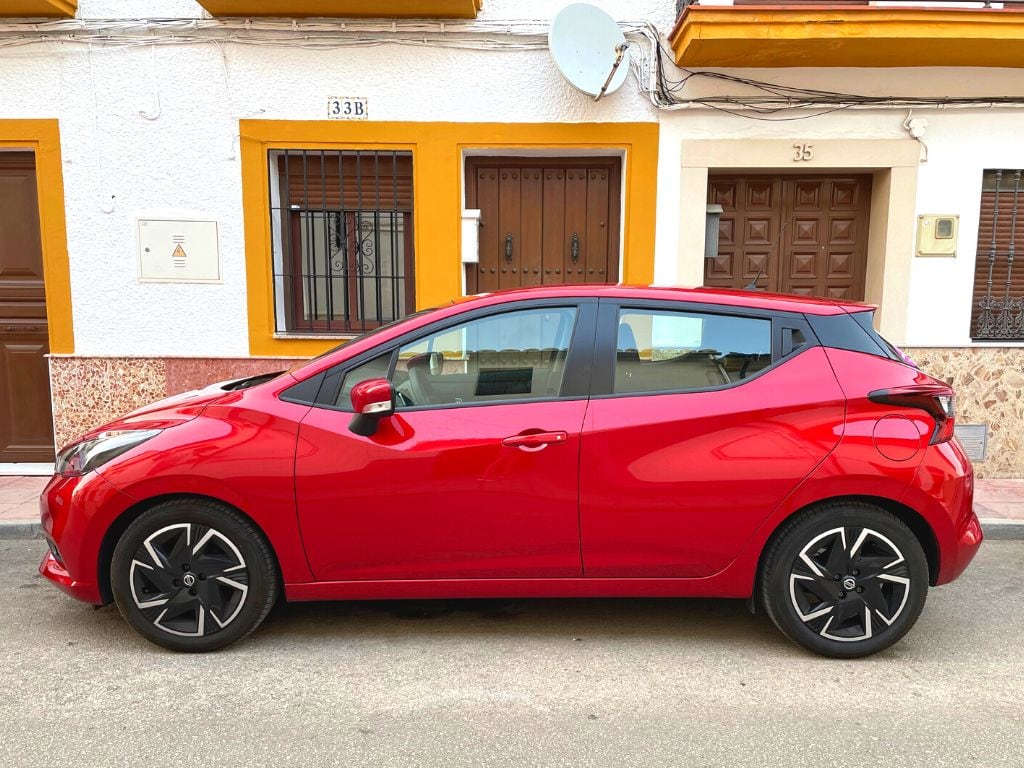
Where is Ronda, and how do you get there? Let’s review Ronda’s location, the best ways to get to Ronda, Spain with or without a car, and parking in Ronda:
Where is Ronda?
First things first, where is Ronda in Spain? Ronda is a small town in the Spanish province of Málaga. It is located 63 mi (101 km) west of Málaga city in the autonomous community of Andalusia (southern Spain). Ronda is tucked away in the Serranía de Ronda mountain range and bordered by two gorgeous natural parks, the Sierra de Grazalema to the west and Sierra de las Nieves to the east.
Is it hard to drive to Ronda?
Driving to Ronda, Spain is fairly easy. From my experience, the road system in Andalusia is well-maintained and clearly marked. You can access Ronda within a few hours of each of the major cities in Andalusia via the highways. As a bonus, you get to enjoy a spectacular view of the mountains, which are dotted with olive groves and tiny villages, all the way to Ronda.
However, I suggest checking Google Maps to verify you’ve chosen a route along a highway (A for Autopista) and not a mountain road (MA). There are blind curves on some of the smaller mountain roads in the Sierra de Grazalema or in the Serranía de Ronda, for example. Taking these roads will slow you down, even if the estimated time is the same!
Search for a rental car on Discover Cars.
Is there a bus to Ronda?
Yes, you can take the bus to Ronda. Andalusia has a good bus network with several providers connecting the cities and towns in the region. Do note that bus schedules are typically sparse, with only a few buses running per day. Sometimes just one bus runs to the smaller pueblos blancos (white villages) daily.
Once you get to Ronda, the Ronda bus station is located in El Mercadillo at Plaza Concepción García Redondo. It’s about 5 minute walk from the historic town center. Start your search for a bus by using Omio.
Can you get to Ronda Spain by train?
Yes, you can take the train to Ronda in Spain. There are just a few trains each day, so be sure to check the schedule! You can book your train to Ronda using Omio.
Day Trips to Ronda (Ronda Tours)
If you’d like to spend one day in Ronda, and you do not want to drive yourself, opt for a guided tour! Guided tours to Ronda are typically offered from Málaga, Seville, Granada, Cádiz, or Marbella.
Even better, day trips to Ronda are often combined with a visit to the white villages! For example, this White Villages & Ronda Day Tour from Seville stops at the fantastic mountain village of Zahara de la Sierra.
Ronda day tours that stop at wineries are also popular. This full-day wine tour from Marbella includes wine and tapas tasting at two vineyards after stopping in Ronda.
Better yet, pick a private tour from Málaga to get the most out of your day!
Want to visit Ronda on a day tour? Here are some top-rated Ronda day trips from nearby cities in Andalusia: ⤵
Where to Park in Ronda
If you don’t want to spend time looking for a street parking spot, there are several underground parking garages and parking lots in Ronda, mostly located in the new town. (The old town has many pedestrianized streets, so we recommend parking in the new town and walking.)
The parking garages are relatively affordable and safe.
The best places to park in Ronda are the Public Parking La Concepción (above-ground car park) and Parking Martínez Astein. The latter is a typical underground garage and a bit tight. It’s also cash only.
The parking lot at the Plaza del Socorro is also an option but is more expensive and requires you to download an app to pay.
There is also plenty of free street parking in the new town. I managed to park 6 blocks from the bridge during a 4-day visit in the height of the high season with no issues!
What is the nearest airport to Ronda?
The nearest airport to fly into for Ronda, Spain is Málaga-Costa del Sol Airport (AGP). It’s around 63 miles (101 km) away via the fastest driving route. Other nearby airports include Gibraltar International Aiport (GIB) at 70 mi/112 km, Jerez (XRY) at 74 mi/119 km, Sevilla (SVQ) at 85 mi/137 km, and Granada (GRX) at 104 mi/167 km.
Getting Around Ronda
The Old Town and the touristic section of Ronda’s new town are relatively small. Thus, you can easily get around Ronda on foot. Do be prepared, however, as this cliffside village is hilly! Some of the paths are quite steep and slippery, especially getting down to the Arab baths or to the viewpoints of the gorge. Wear good walking shoes.
Where to Stay in Ronda
While many visitors spend a day in Ronda, you can easily find enough things to see and do for a few days. Accordingly, you’ll need a place to stay in Ronda! There are many different hotel options for any budget or travel style.
Here are our top picks for hotels in Ronda:
Parador de Ronda
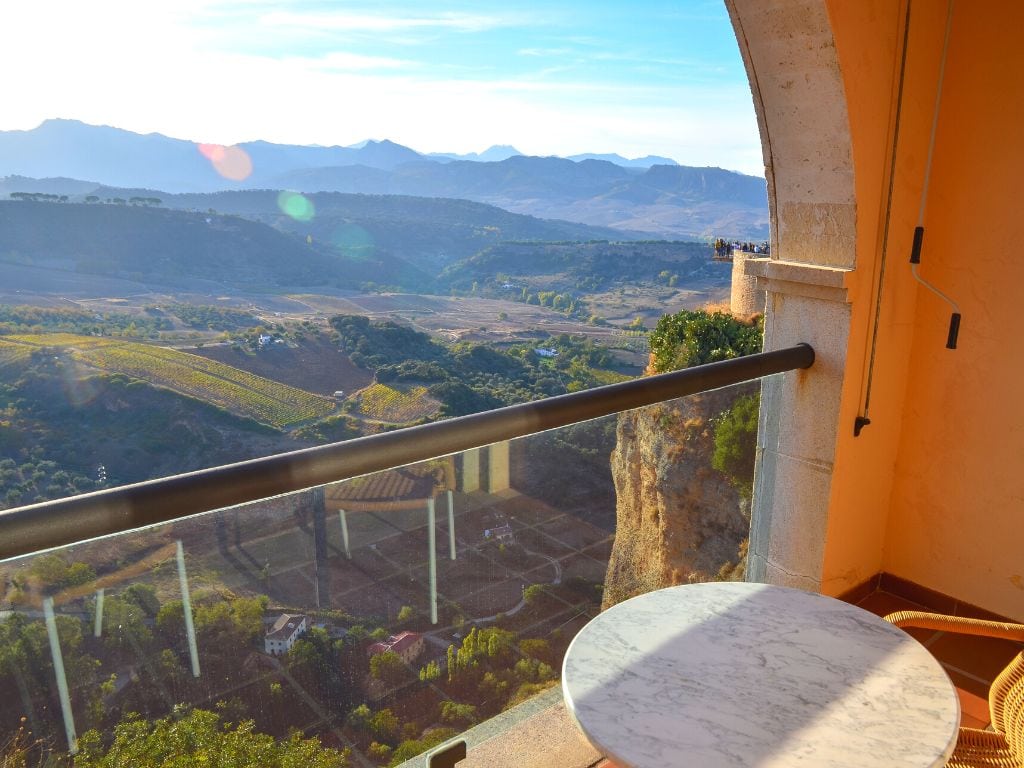
The Parador de Ronda is a historic 4-star hotel located at the edge of the El Tago gorge, just next to the New Bridge.
Each room at the Parador de Ronda, once Ronda’s Town Hall, features a private balcony. Be sure to choose a room with mountain views!
Amenities include air conditioning during summer, a pool, an Andalusian restaurant serving fresh local produce, and an on-site shop.
If you’re planning to stay in Ronda, we recommend you treat yourself to the highly-rated Parador de Ronda! Its exceptional location, proximity to the Old Town, and vistas create a once-in-a-lifetime experience.
Catalonia Ronda
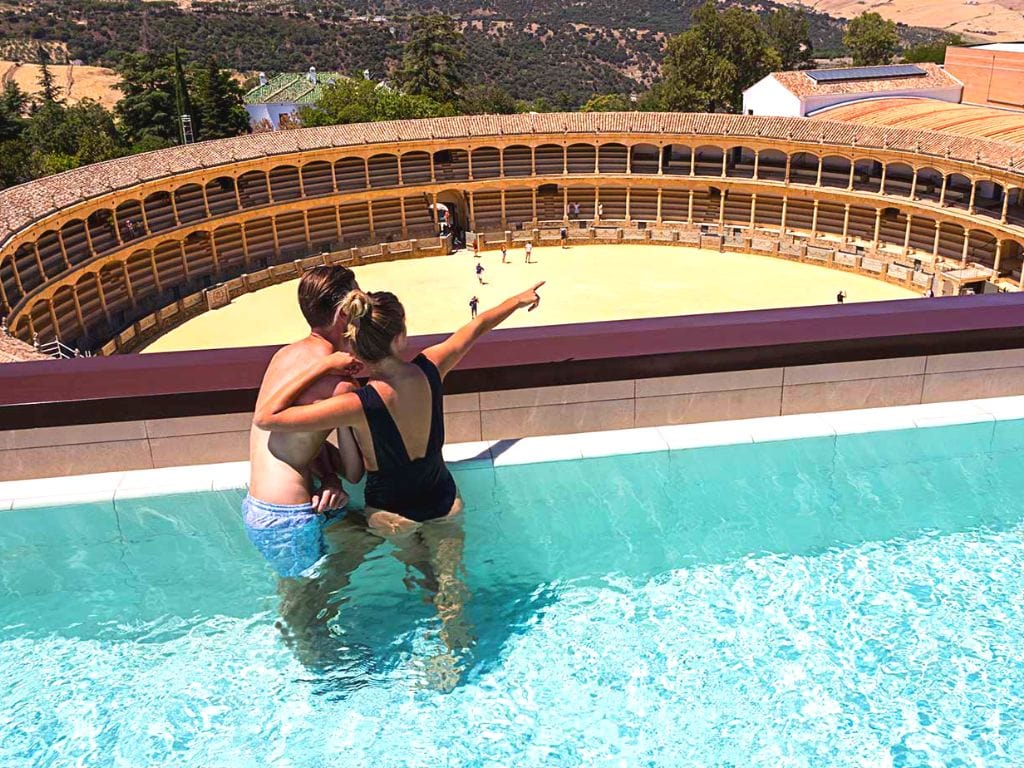
Experience the luxury of Catalonia Ronda, a modern hotel situated near Ronda’s bullring.
With its elegant rooms featuring high-tech amenities and modern bathrooms, the Catalonia Ronda offers a comfortable and stylish stay. Unwind after a day of Ronda sightseeing in the rooftop pool and jacuzzi.
Indulge in Andalusian cuisine with a modern twist at the Panorámico restaurant or relax at the Gastrobar terrace, both offering stunning views of the mountains and bullring.
With its central location near all of Ronda’s major attractions, Catalonia Ronda is a wonderful choice for a memorable stay in Ronda.
Hotel San Francisco
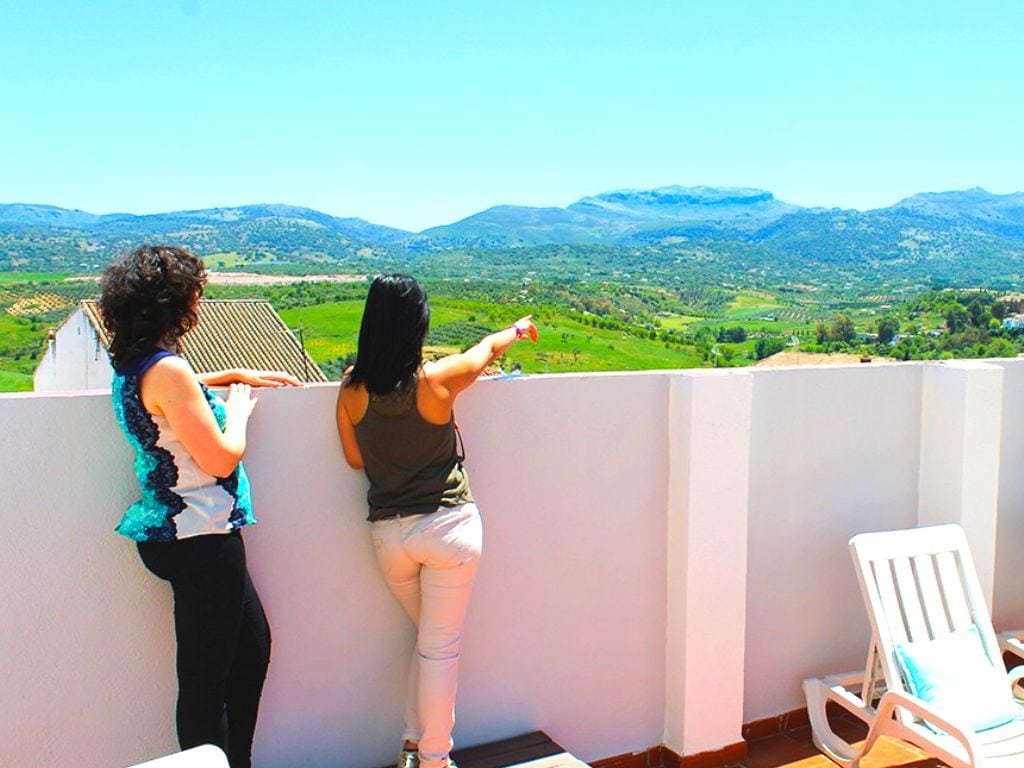
Hotel San Francisco is an affordable boutique hotel located in the heart of Ronda, housed in a restored palace from the 18th century.
It offers a good budget option with comfortable rooms featuring air conditioning, TV, and private bathrooms. Guests can enjoy the cozy atmosphere and a sun deck with beautiful views.
The hotel’s central location allows easy access to Ronda’s major sights and the hotel staff is known for being welcoming and providing useful tips for exploring the city.
With its convenient location and comfortable accommodations, Hotel San Francisco is a great choice for travelers visiting Ronda.
Where To Eat & Drink In Ronda
Aside from historical sites, interesting museums, and jaw-dropping views, Ronda has a lively dining scene with everything from local coffee shops to tapas to typical Andalusian cuisine.
What to Eat in Ronda

Ronda’s culinary tradition is a fusion of Moorish, Roman, and Spanish influences. Consider ordering some of the following must-try dishes:
Gazpacho: A refreshing cold soup made with tomatoes, peppers, and cucumbers that are served with bread and perfect for hot summer days.
Rabo de Toro: A traditional bull tail stew slow-cooked in a rich red wine sauce that dates back to Roman times.
Migas: A comforting Andalusian dish made with breadcrumbs, pork sausage or other meats, and garlic coated in olive oil.
Carrillada: Pork or beef cheeks that are typically braised in red wine sauce and served with root vegetables.
Olive oil, honey, and wine: Sample the exquisite olive oil produced in the region, the local honey, and the flavorful wine that Ronda is renowned for.
Sweets: Try Ronda’s famous pastries and sweets, such as “roscos de vino” (wine doughnuts) and “yemas de Ronda” (sweet treats made with egg yolks and sugar).
Best Restaurants in Ronda
Ronda is home to a dynamic dining scene with a wide selection of excellent restaurants to suit different tastes. Here are some recommendations for the best restaurants in Ronda:
Restaurante Bardal: A Michelin-starred restaurant that impresses with its culinary artistry and impeccable service.
Parador de Ronda: Enjoy a delicious meal at this renowned establishment, offering a memorable dining experience with a focus on fresh and flavorful ingredients.
Casa María: A cozy and innovative restaurant located near the old city gates with delicious courses crafted based on fresh market ingredients, making it a must-visit for food enthusiasts.
Entrevinos Ronda: A wine bar and tapas restaurant that offers a superb selection of wines from the nearby Sierras de Málaga, perfectly paired with delectable tapas.
When to Visit Ronda
The best time to visit Ronda is during the spring and fall. Spring (March to May) offers pleasant weather with moderate temperatures and minimal rainfall. Fall (September to November) provides comfortable temperatures, lower tourist crowds, and affordably priced accommodations—outside of the Feria de Pedro Romero in September.
Summer (June, July, August) is peak season in Ronda. The weather is hot and dry. It can be crowded and more expensive during this time.
Winters in Ronda are short and mild, with occasional rainfall.
Overall, Ronda’s climate is generally favorable throughout the year, but spring and fall offer the best balance of weather, crowd levels, and events.
Places to Visit Near Ronda
If you’re looking for some day trips from Ronda, here are some amazing things to do near Ronda.
Cueva de la Pileta
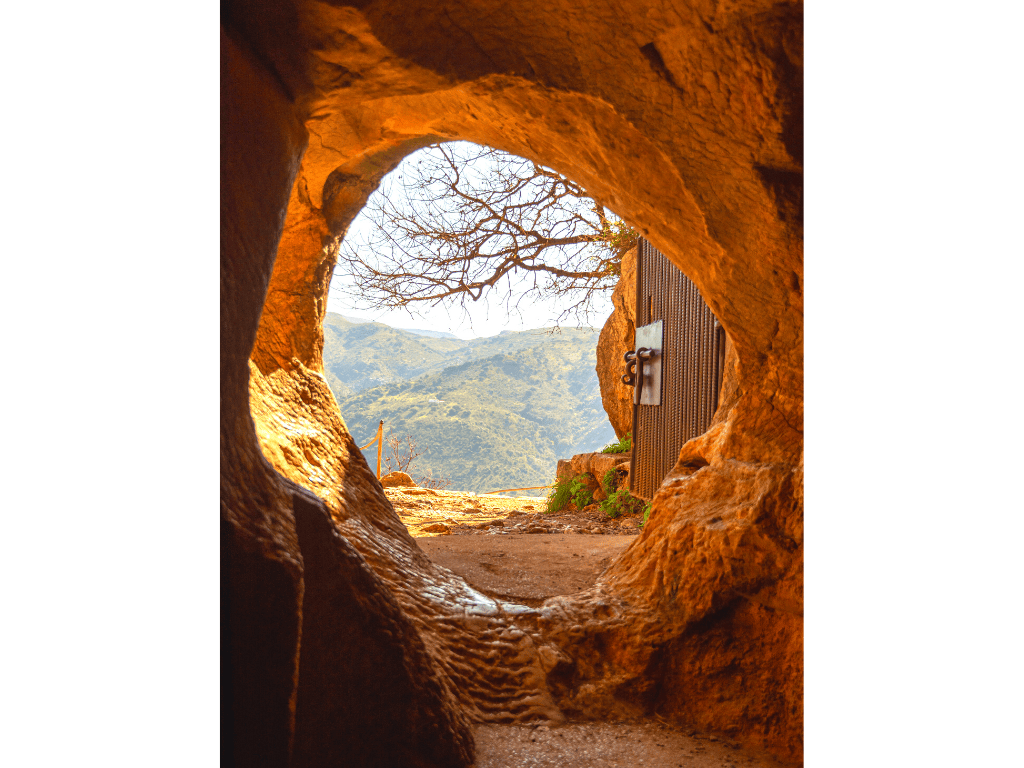
Cueva de la Pileta is a cave nestled in the eastern part of the Sierra de Grazalema. Just a half-hour drive south of Ronda, this hidden gem contains prehistoric wall paintings dating back as far as 20,000 years.
Venture through the mesmerizing geological formations by lantern light, where you’ll encounter ancient depictions of horses, bison, bulls, goats, deer, and fish. Charring from ancient campfires adds to the mystique of this archaeological treasure.
Today, the Cueva de la Pileta is run by the descendants of José Bullon Lobato, who discovered the cave in 1905.
Wear good shoes on this educational day trip from Ronda as it can be slippery. Reservation required.
Júzcar, the Blue Village near Ronda
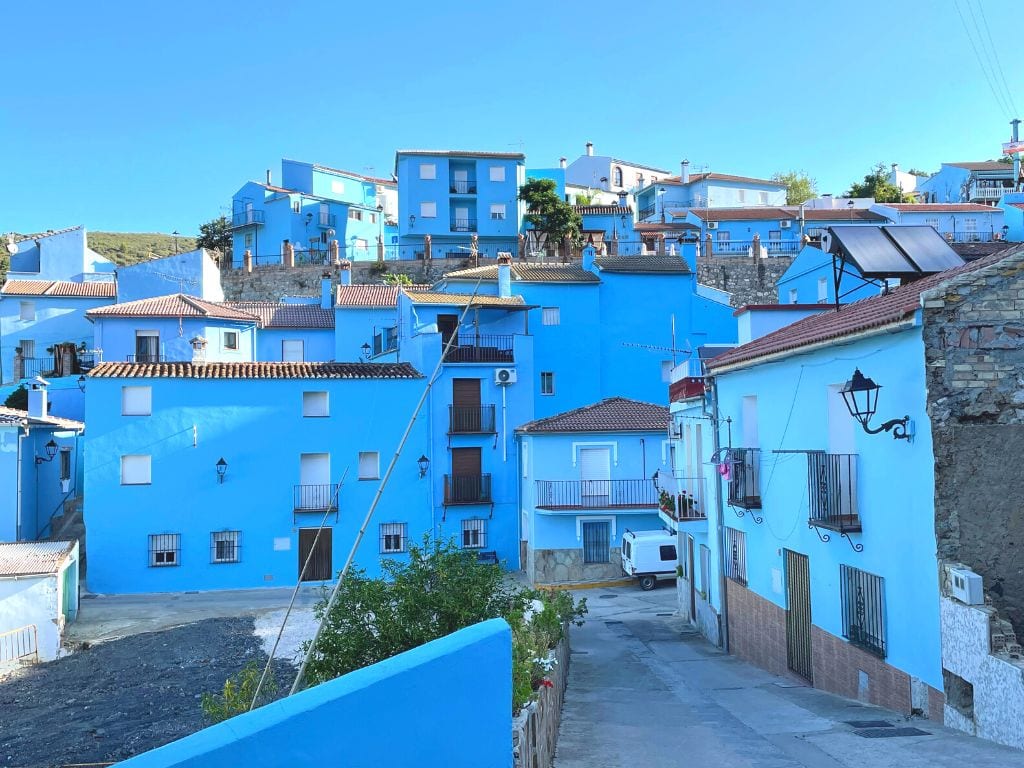
Discover the magical blue village of Júzcar on a day trip from Ronda! Located about 30 minutes south of Ronda and 2 hours west of Malaga in the Valle del Genal in the Serrania de Ronda, Júzcar is also known as the Smurf Village.
Once a traditional whitewashed village, Júzcar transformed into a whimsical blue haven when its buildings were painted blue by Sony Pictures to celebrate the premiere of the Smurfs movie in 2011. The unexpected transformation attracted a staggering number of tourists so the town decided to leave the buildings blue.
Although officially referred to as La Aldea Azul, (Blue Village) the village is still commonly known as the Smurf Village and still has some Smurf memorabilia around the town. It’s a fun place to spend a few hours exploring.
To reach Júzcar, it’s best to travel by car (Book on Discover Cars.). Take extra care when driving, as there are many blind curves on the mountainous road to the rural village.
Acinipo Ruins
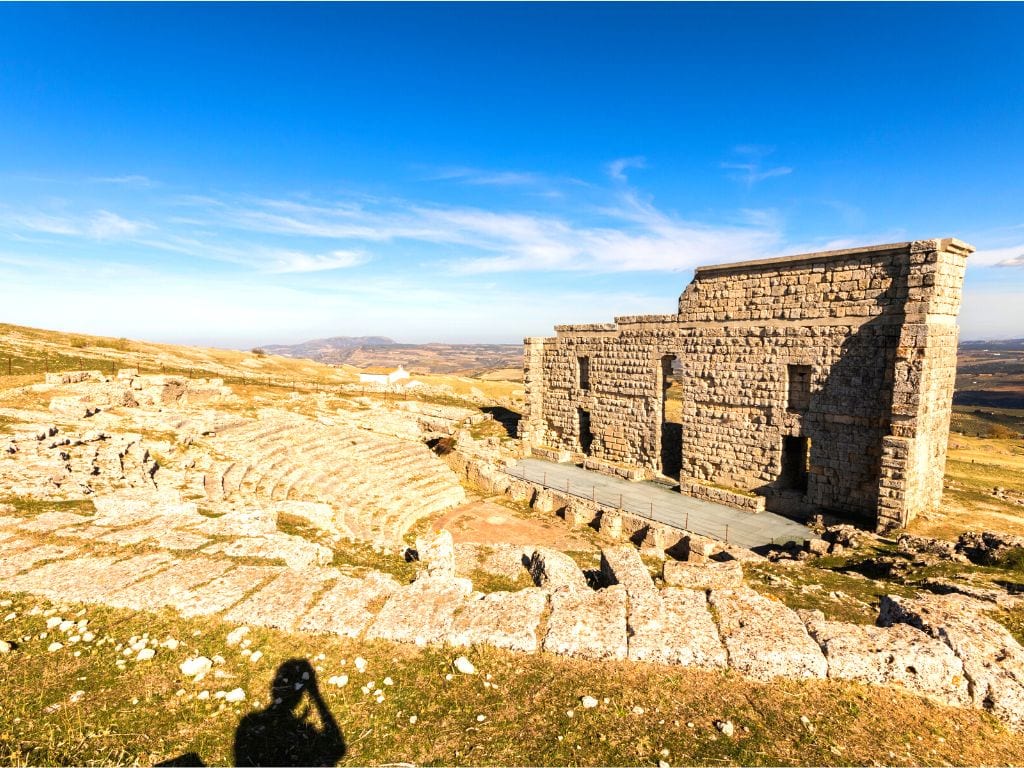
The ruins of Acinipo, an ancient Roman city, are located approximately 13 miles (21 km) from Ronda in Southern Spain. Often referred to as Ronda la Vieja (Old Ronda), Acinipo once held the prestigious title of regional capital before being surpassed by its neighboring city.
The main site at Acinipo is the remarkably preserved Roman theater, carved into the natural rock slope. Remnants of thermal baths and ancient waterworks also remain, offering a glimpse into the daily lives of the inhabitants.
Like many of the sites in the region, the setting in the mountains is other-worldly.
With its scenic views, free admission, and easy accessibility, Acinipo is a fine example of the grandeur of Roman civilization.
Ready to explore? Search for a rental car here ⬇
Visiting Ronda, Spain: FAQs
Is Ronda worth visiting for more than a couple of days?
Yes, Ronda is worth visiting for more than a couple of days. While most visitors choose to spend one day in Ronda, there is a lot to do in the area to fill your calendar. After spending a day or two in the city, you can go hiking or biking, do wine tastings at local wineries, drive to a few white villages, explore ancient ruins, or visit a traditional Andalusian farm, for example.
How many days in Ronda, Spain do you need?
To fully appreciate the city, I recommend spending at least 2 to 3 days in Ronda. This will allow you to venture beyond the typicaly attractions, such as the Puente Nuevo, the historic old town, and the bullring. The breathtaking views and the local food and wine will never get old. Moreover, spending a few days in Ronda will give you a chance to do some exploring and outdoor activities nearby.
Is a day trip to Ronda worth it?
Planning a Ronda day trip from Seville or Málaga is totally worth it! Since the main Ronda tourist attractions are concentrated in a small, walkable area, you can see a lot on a one-day Ronda itinerary. You won’t regret spending a day in Ronda, seeing Ronda’s astonishing landscapes, incredible bridge, and historic sites.
Is 1 day in Ronda enough?
In one day in Ronda, you can see many of Ronda’s major attractions and get a feel for the city. Plus, you’ll see the Puente Nuevo and from it the mesmerizing views and hanging houses—these alone are worth a day trip. You’ll also have a few hours to explore the historic center, visit a few museums, enjoy a meal, and take lots of photos.
What is special about Ronda Spain?
Spain’s Ronda is known for its emblematic bridge that overlooks the El Tajo gorge as well as being the spiritual home of bullfighting. The view of the countryside—as well as the feeling of standing atop the cornice—is indescribable. You can’t help but think what a wonderful quality of life Rondans must have to be surrounded by so much beauty, history, and culture.
Is it worth staying overnight in Ronda?
For the awe-inspiring views and visits to Ronda’s top historical and cultural sites, a day trip to Ronda will suffice. However, staying a night in Ronda will allow you to experience the city more fully. For instance, overnighting in Ronda will give you a chance to enjoy the sunset over the gorge and eat dinner at one of Ronda’s best restaurants. Upon waking, you can hike into the gorge and spend a few hours on the Los Molinos trail for a different perspective of Ronda.
What is the best month to visit Ronda?
For ideal conditions, consider visiting Ronda in late April or September. Late April offers pleasant weather and spring blooms, while September provides great weather and fewer tourists. These months are also associated with festivals like Semana Santa in (typically March or April) and Feria de Pedro Romero in September.
Do you need a car in Ronda, Spain?
In general, no you do not need a car in Ronda, Spain. The city is walkable with most of the essential tourist attractions within a small area. The old Moorish town of Ronda is largely car-free, as well. However, if you’d like to explore outside of Ronda, such as to visit the region’s pueblos blancos (white villages), we recommend renting a car.
Is Ronda, Spain walkable?
Yes, Ronda, Spain is walkable. It’s largely concentrated on either side of the New Bridge, meaning you can get to all the main sites, restaurants, hotels, and shops in minutes. However, to get to some spots like the Arab Baths, the Old Bridge, or the Jardines de Cuenca, plan to do some walking on steep cobblestones! Ronda is built on the edge of a cliff, after all! There are also several walking trails in and around Ronda, which you’ll need to climb down from the city to enjoy. Wear comfy shoes.
What is the population of Ronda, Spain?
Ronda’s population is roughly 35,000 people (2021).
Is Ronda, Spain open on Sundays?
As Ronda is largely dependent on tourism, most of its central attractions are open on Sundays (at least during the busiest times of the year). Though, they may have shortened hours, closing around 3 pm. Many of the stores will be closed, and not all of the restaurants will be open. The grocery stores are typically closed. Of course, the gorge, the views, and the trails will be open and waiting for you!
Where can I get a map of Ronda, Spain?
When you get to Ronda, head to the tourist information office. It’s conveniently located right next to the bullring and the Alameda del Tajo park. There, you can pick up a map of Ronda along with a friendly explanation of where to go and what to see during your stay.
Does Ronda Spain have beaches?
No, Ronda, Spain does not have any beaches. As for how far Ronda is from the beach, Ronda is located about an hour from Costa del Sol in Málaga, Spain which has incredible sandy beaches. Marbella is the largest beach resort town near Ronda.
Is Ronda, Spain safe?
Yes, Ronda is generally considered safe for foreigners. It’s a small, tight-knit community that relies heavily on tourism. Of course, always use your best judgment. If you’re parking a rental car, don’t leave any valuables in sight, for example.
When it comes to hiking in the area, wear proper clothing, follow posted signage, take plenty of water, and get cell coverage in case of emergency (112 is the emergency number in Spain.).
Can you drink tap water in Ronda, Spain?
Yes, tap water is safe to drink in Ronda, Spain. However, most people (locals and travelers) drink bottled or filtered water. You can buy bottled water at any grocery store for about 75¢ for 1.5 liters.
Is Ronda a white town?
Ronda is the largest of the white villages (pueblos blancos) in Andalusia, although everything isn’t painted white! Set atop a dramatic cliff with views of the surrounding valleys and mountain ranges, Ronda, Spain is a must-see!
How do you walk down the gorge in Ronda?
The footpath that leads into the gorge starts in the Plaza de Maria Auxiliadora. The stone-covered track is easy enough to follow, but it can be steep in parts, so take care when walking to see the bridge from below!
How deep is the gorge in Ronda?
The El Tajo gorge is 328 ft (100 m) deep. At the bottom of the gorge, you’ll find the Guadalevín River as well as the Ronda waterfall.
Is Ronda the oldest city in Spain?
Ronda is one of the oldest towns in Spain. It was first settled by the Celts in the 6th Century B.C. But, evidence of its existence goes back even further to the prehistoric settlements of the Neolithic period. You can even see cave paintings from nearly 20,00 years ago at the nearby ‘Cueva de la Pileta’.
What language is spoken in Ronda, Spain?
People in Ronda, Spain speak Spanish.
Is there a walking tour in Ronda?
The Ronda tourist information center offers daily walking tours for 10€. Sign up at the tourist information center near the entrance to the bullring.
How far is Ronda from Madrid by train?
The train from Madrid to Ronda takes about 4-5 hours. There are typically two trains to Ronda from Madrid each day, one that leaves in the morning and one in the evening. Search for trains on Omio.
Is it easy to drive from Málaga to Ronda?
Self-drive from Málaga to Ronda is possible. If you stick to the main highways, it’s very easy and safe to drive to Ronda, albeit hilly.
How long is the drive from Ronda to Cadiz?
The drive from Ronda to Cadiz is 90 mi (145 km). In normal traffic, it should take about 1 hr 40 minutes.
Are there Ubers in Ronda, Spain?
Although Uber operates in many major cities in Spain, they do not currently have Uber in Ronda, Spain.
Did Hemingway visit Ronda, Spain?
Yes, Hemmingway traveled extensively in Spain and used it as inspiration for his work. He especially loved Ronda and even suggested it as the best place in Spain for a honeymoon!
Why is Orson Welles buried in Ronda, Spain?
American actor Orson Wells loved Spain, and in particular Ronda. He wished to be “Rondeño” forever and so his ashes were spread at the estate of his friend, bullfighter Antonio Ordoñez. You can find a bust of Orson Wells along the Paseo de Blas Infante with the inscription “A man is not where he’s born but where he chooses to die.”
What has been filmed in Ronda?
With such breathtaking scenery and history, it’s no wonder many major productions have been filmed in Ronda. Some of the most popular movies, tv shows, and music videos filmed in Ronda are Warrior Nun (2022), Don Quijote (2000), Carmen (1984), and Madonna’s music video for Take a Bow (1994). The 2014 animated movie Ferdinand also features scenes inspired by Ronda.
Andalusia Travel Guide
🏨 Where should I book accommodations in Andalusia, Spain?
Access a clear and easy hotel booking process that includes hotels, hostels, B&Bs, guesthouses, and more on Booking.com. Or, rent an entire home to live like a local using Vrbo.
🚗 Do I need to rent a car in Andalusia?
You don’t need a car if you’re visiting major cities like Sevilla, Cordoba, and Granada. However, if you’d like to get off the beaten path and the nearby white villages, go hiking, or stay along the Costa del Sol, we recommend hiring a car through Discover Cars!
📱 Where can I get cellular data for Andalusia?
Try using Airalo, the world’s first eSIM store! Download, and install your eSIM, and get connected as soon as you land.
🏙 Where do I find the best Andalusia city tours and day trips?
Search for top-rated Andalusia tours (with reviews!) on Viator and/or Get Your Guide.
📃 Should I buy travel insurance for Andalusia?
Yes! Protect your investment from trip interruptions to unexpected injuries — compare rates on Travel Insurance Master and SafetyWing (which has some of the cheapest rates when you subscribe to a 1+ Month plan).
✈ What are the best sites to book flights to southern Spain?
Search Skyscanner for best flights that other search engines miss!
👙 What should I pack for southern Spain?
Download the Ultimate Europe Packing List for Women to get all the info you need on packing for Europe.
Go to our resources page for more booking tools we use to plan our trips.
Conclusion: Is Ronda Worth visiting?
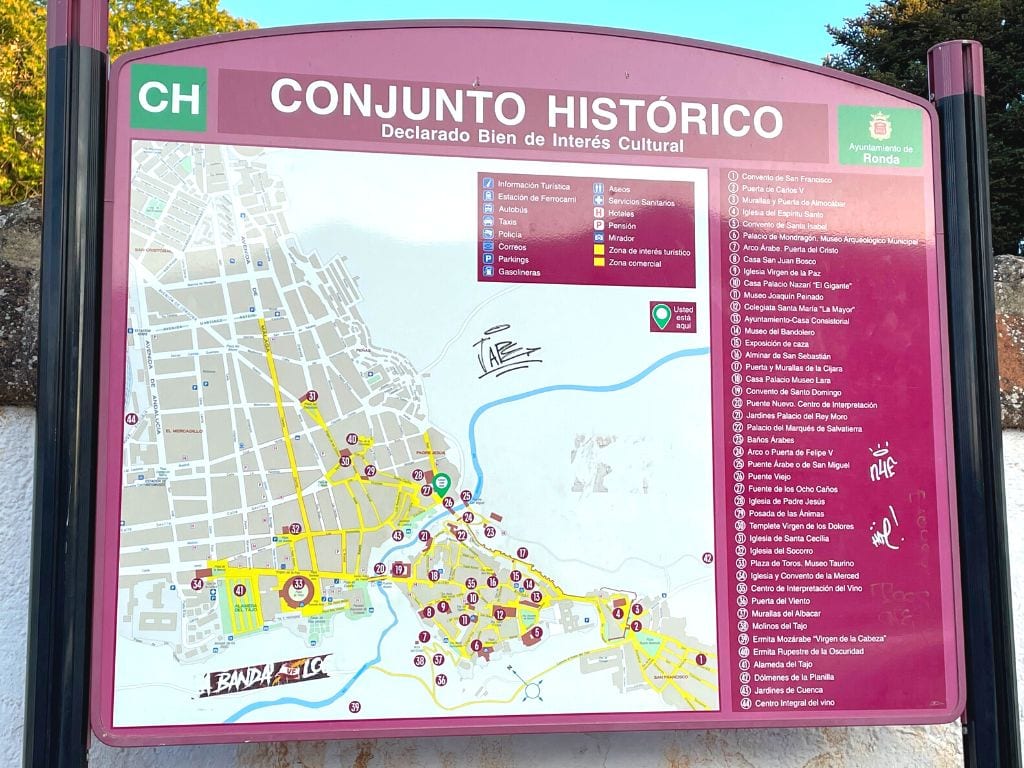
Well, there you have it! Whether you have one day in Ronda or several, we hope that this Ronda travel guide along with the many Ronda, Spain pictures & descriptions we included help you to see that Ronda is absolutely worth visiting!
Be sure to bookmark this page so you can refer to the best things to see in Ronda, how to get to Ronda, and where to stay, etc. when you visit Ronda, Spain!
More Articles on Andalusia
Heading to southern Spain soon? Here are some helpful articles:
